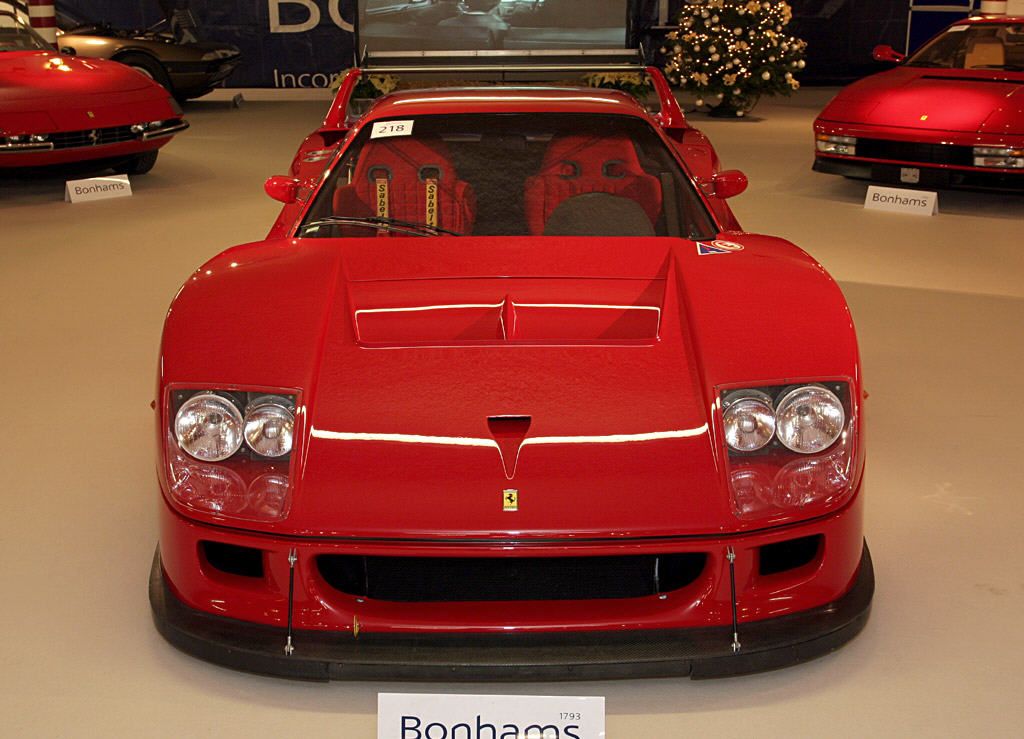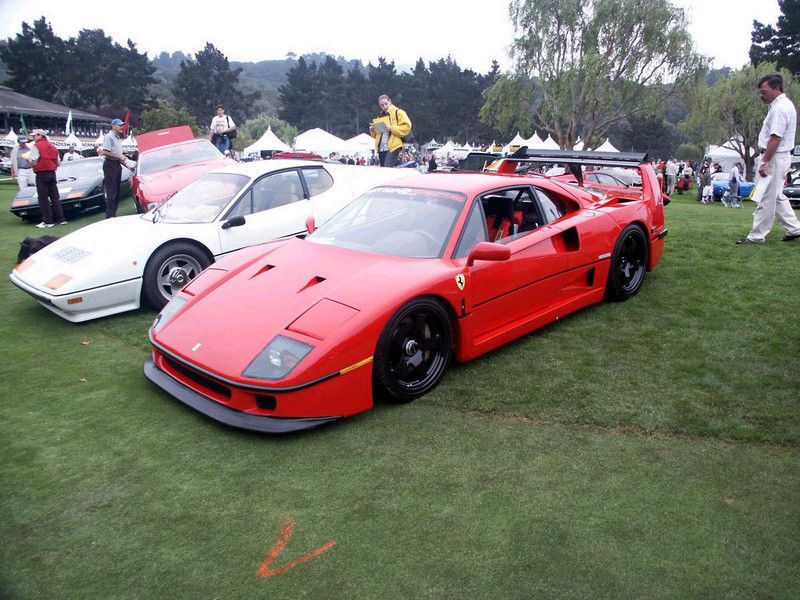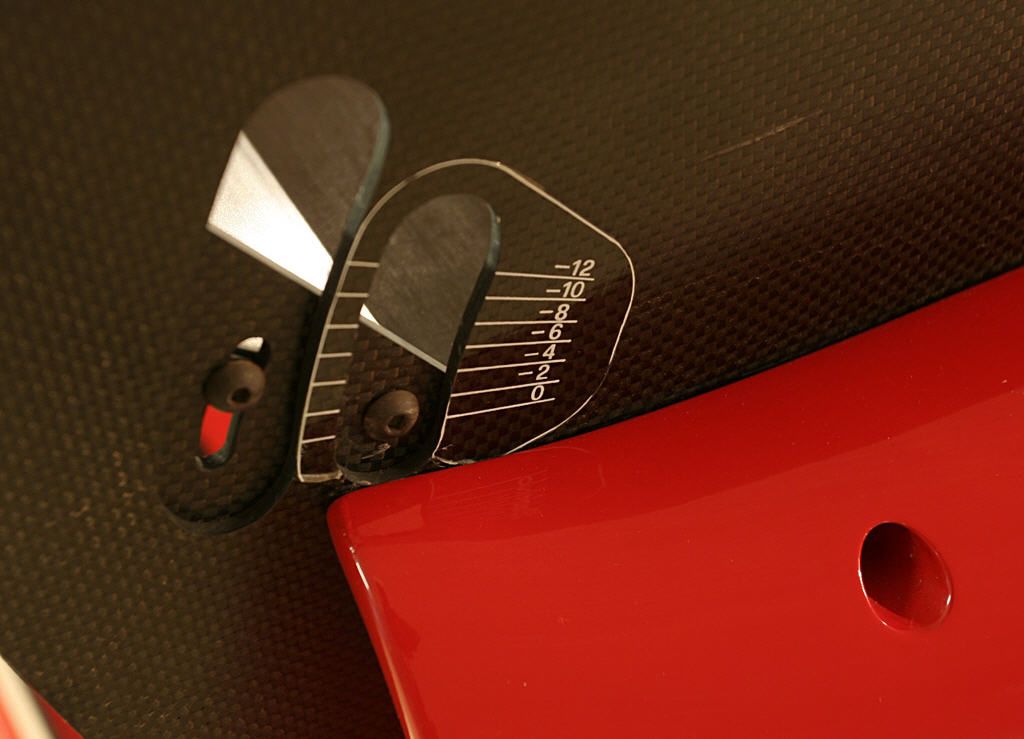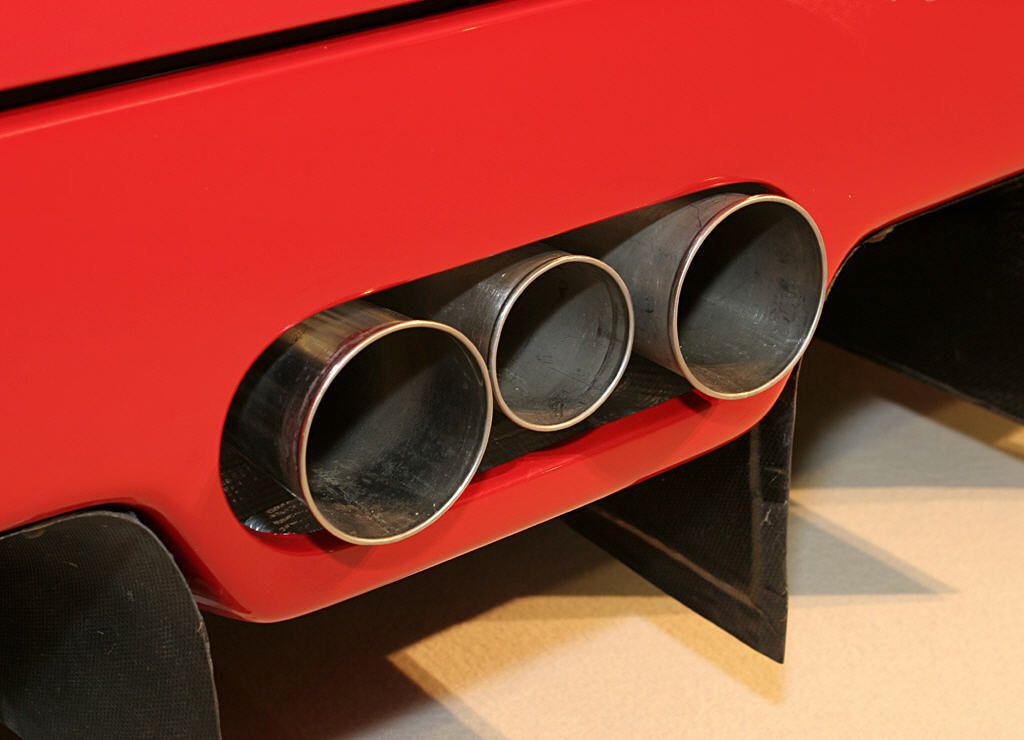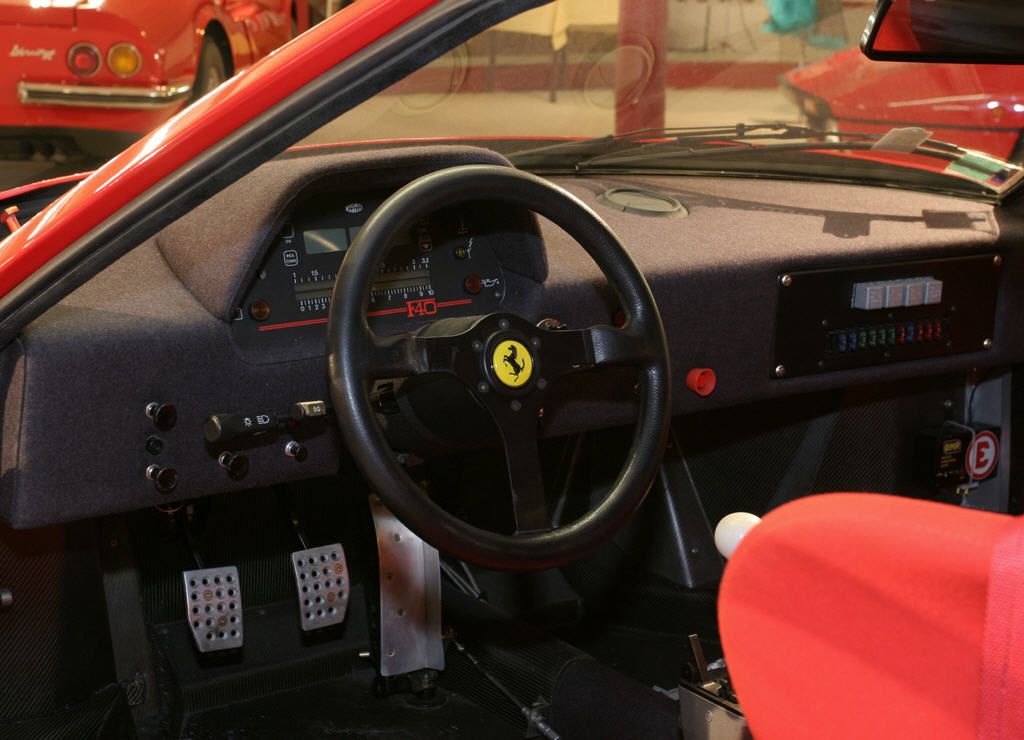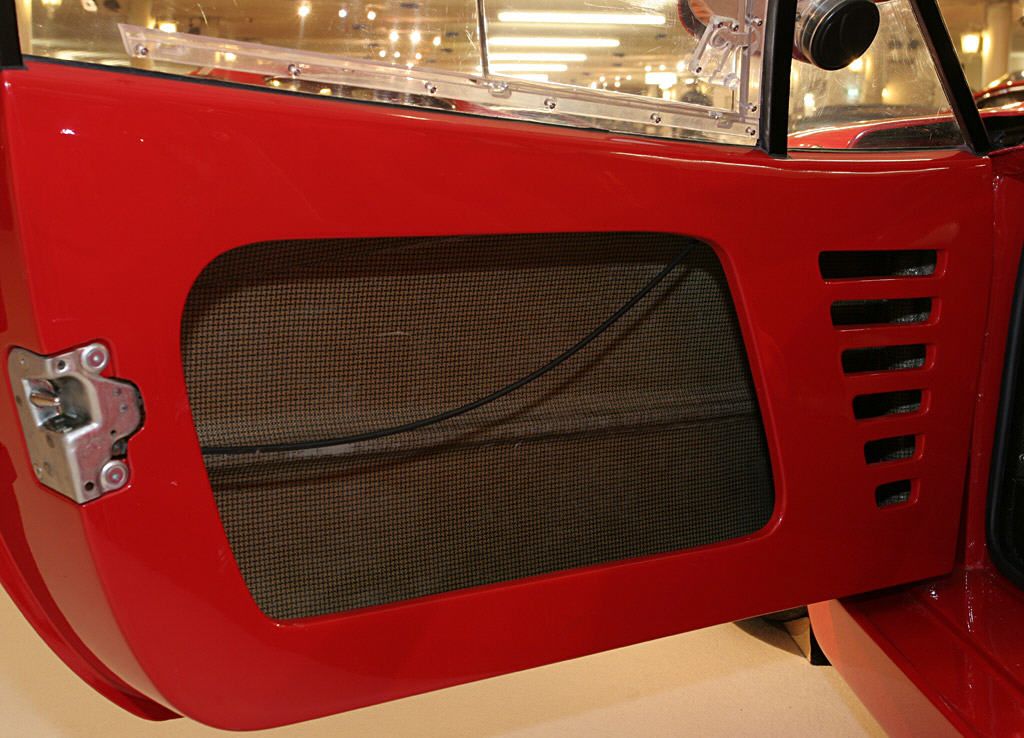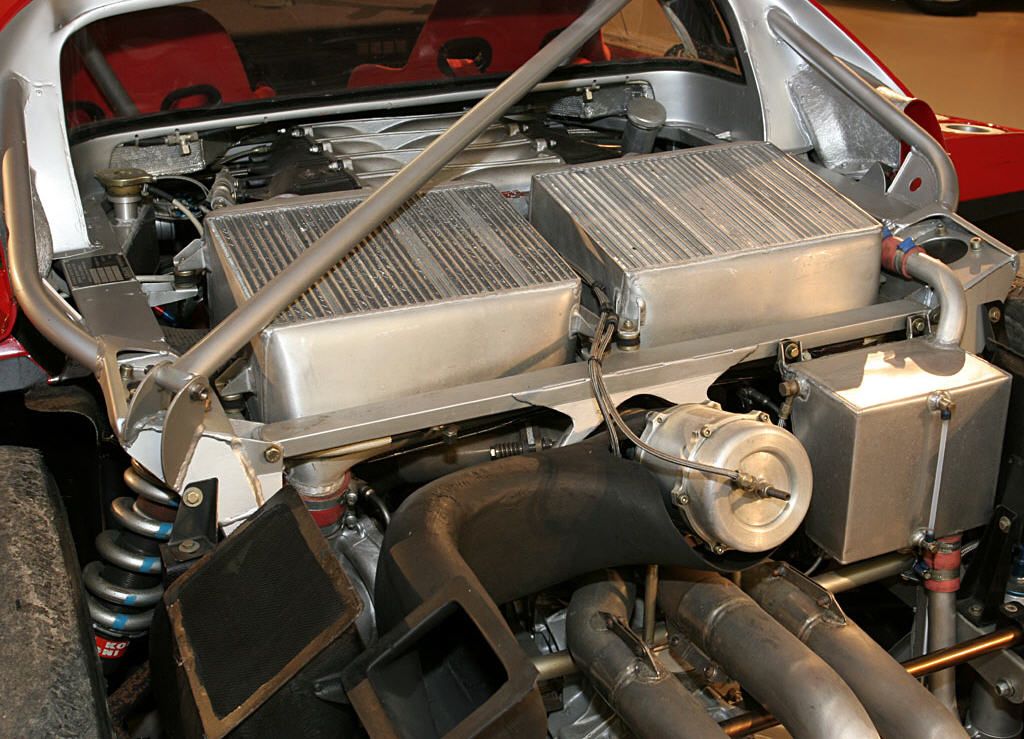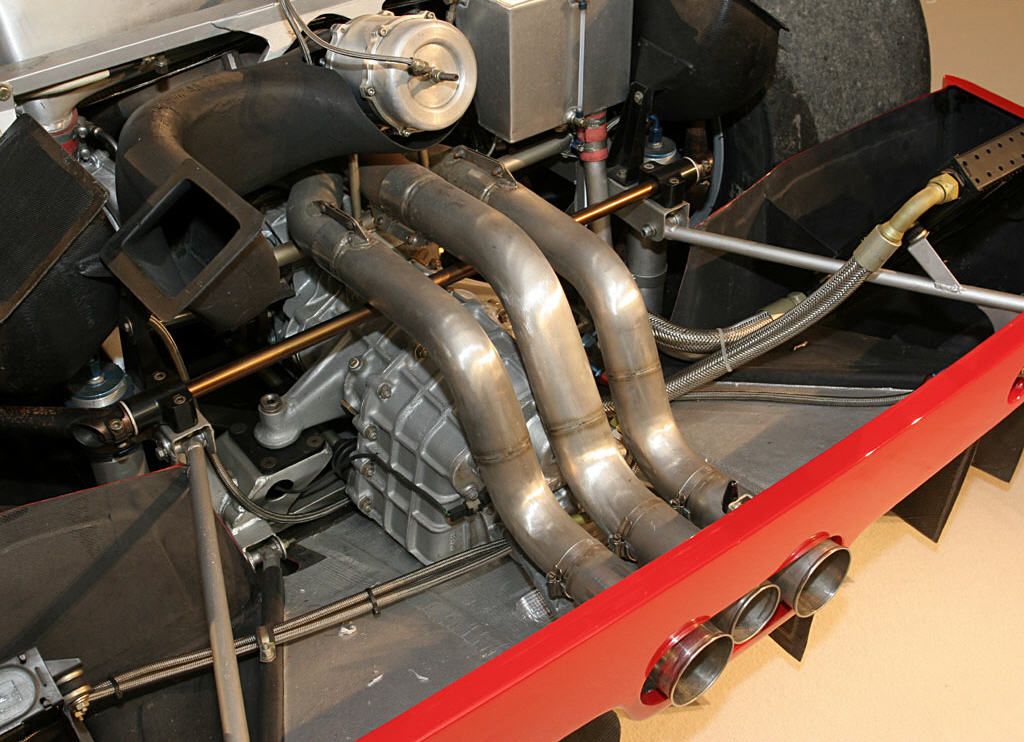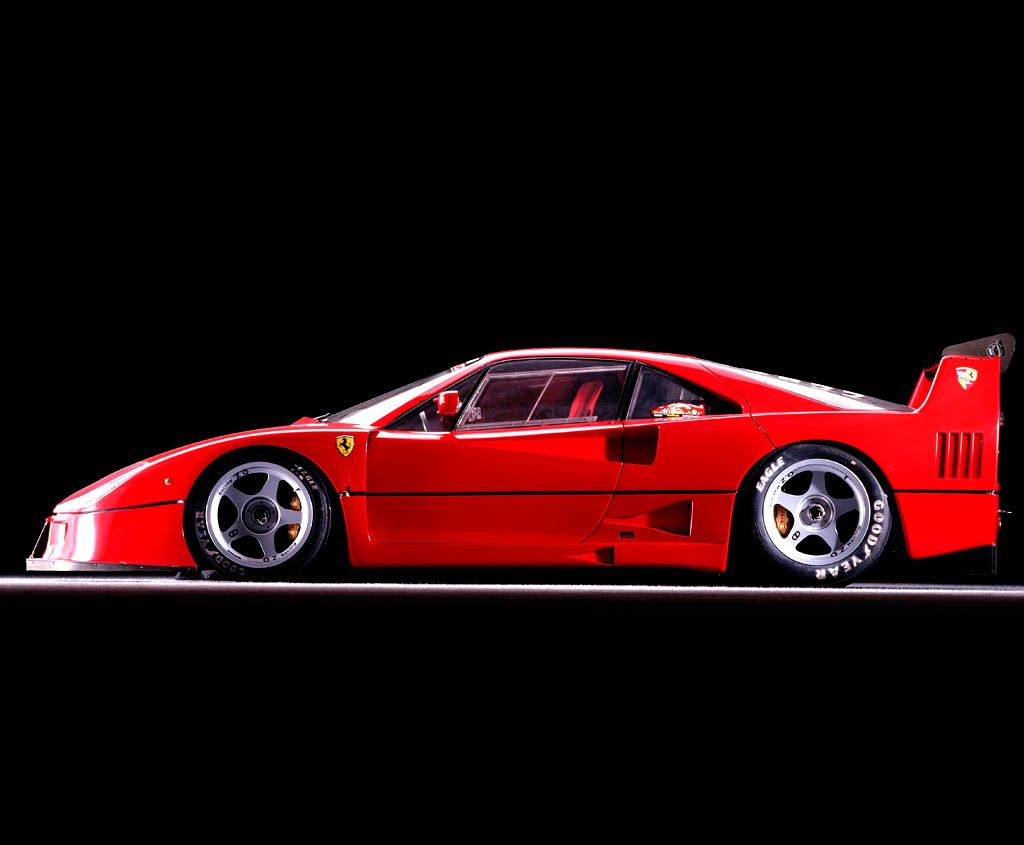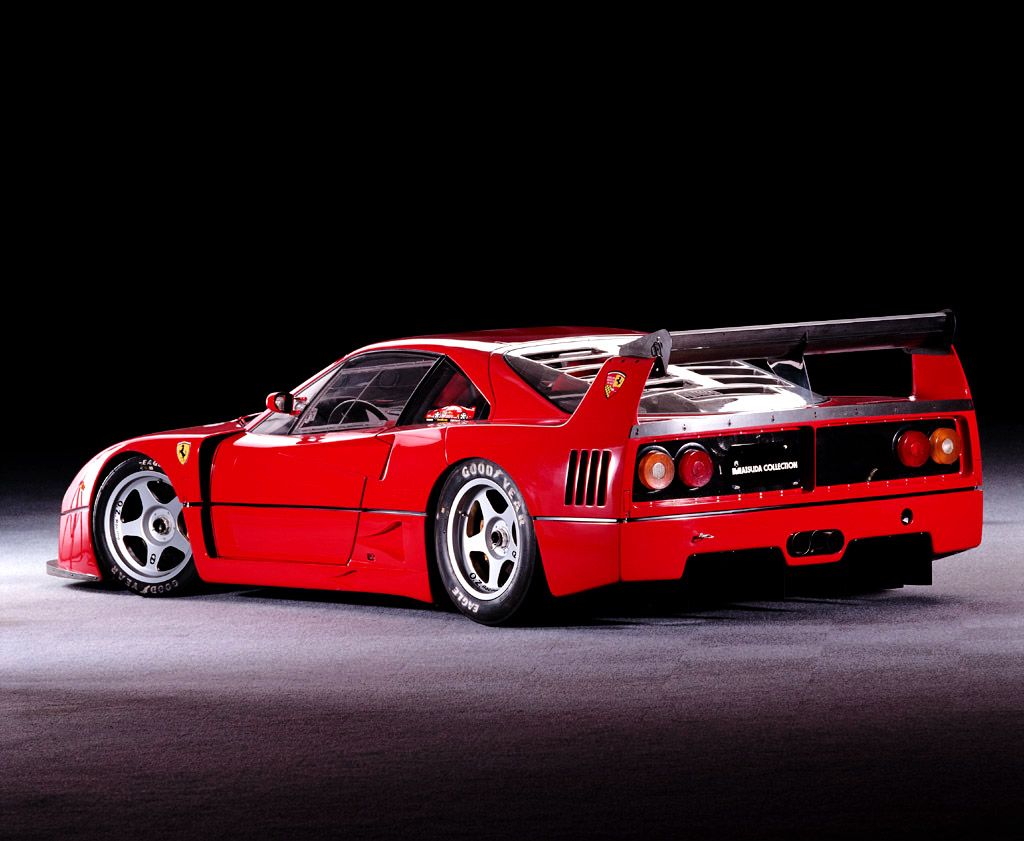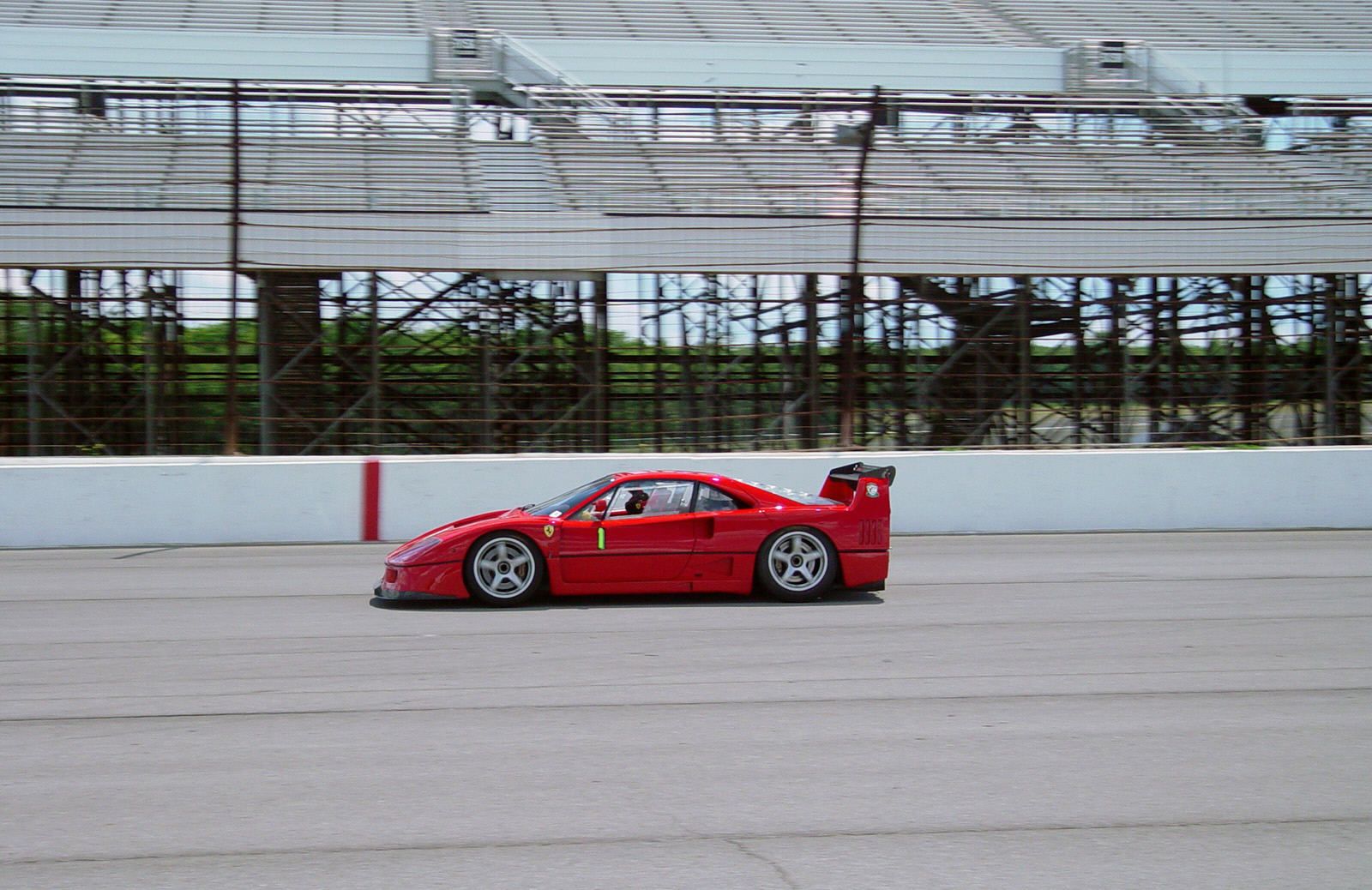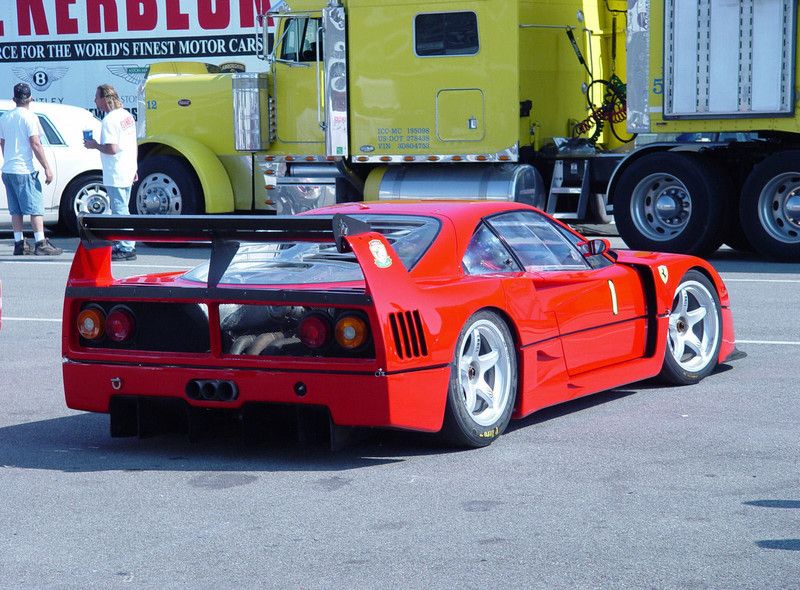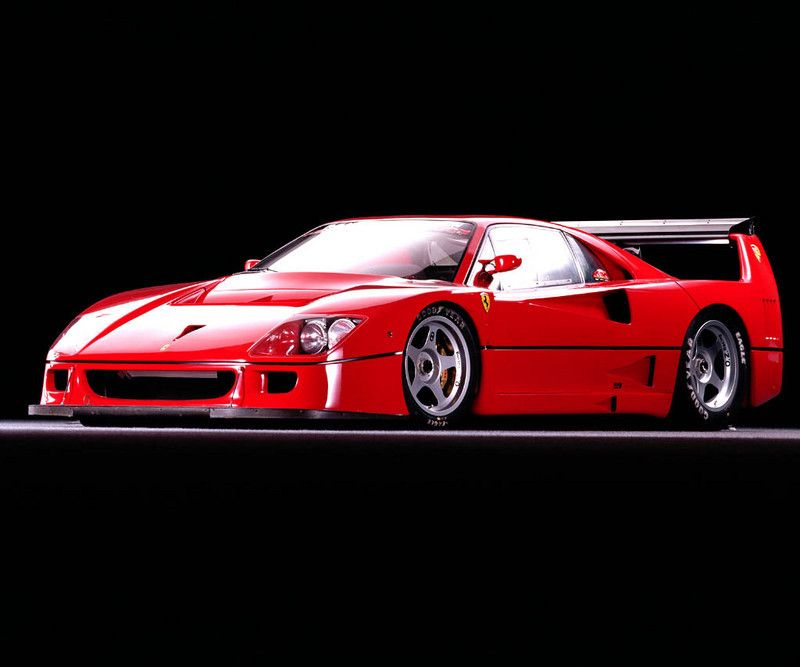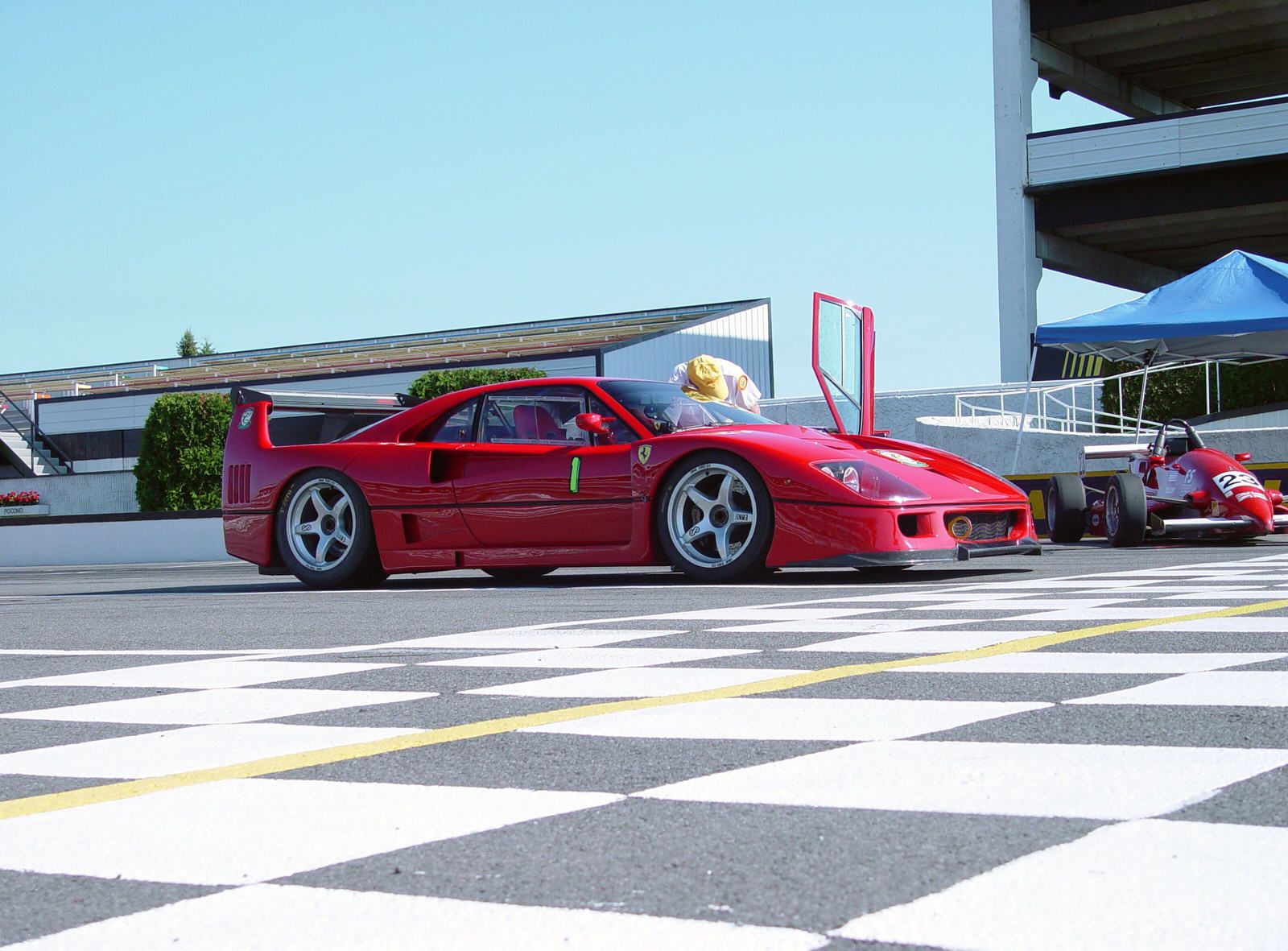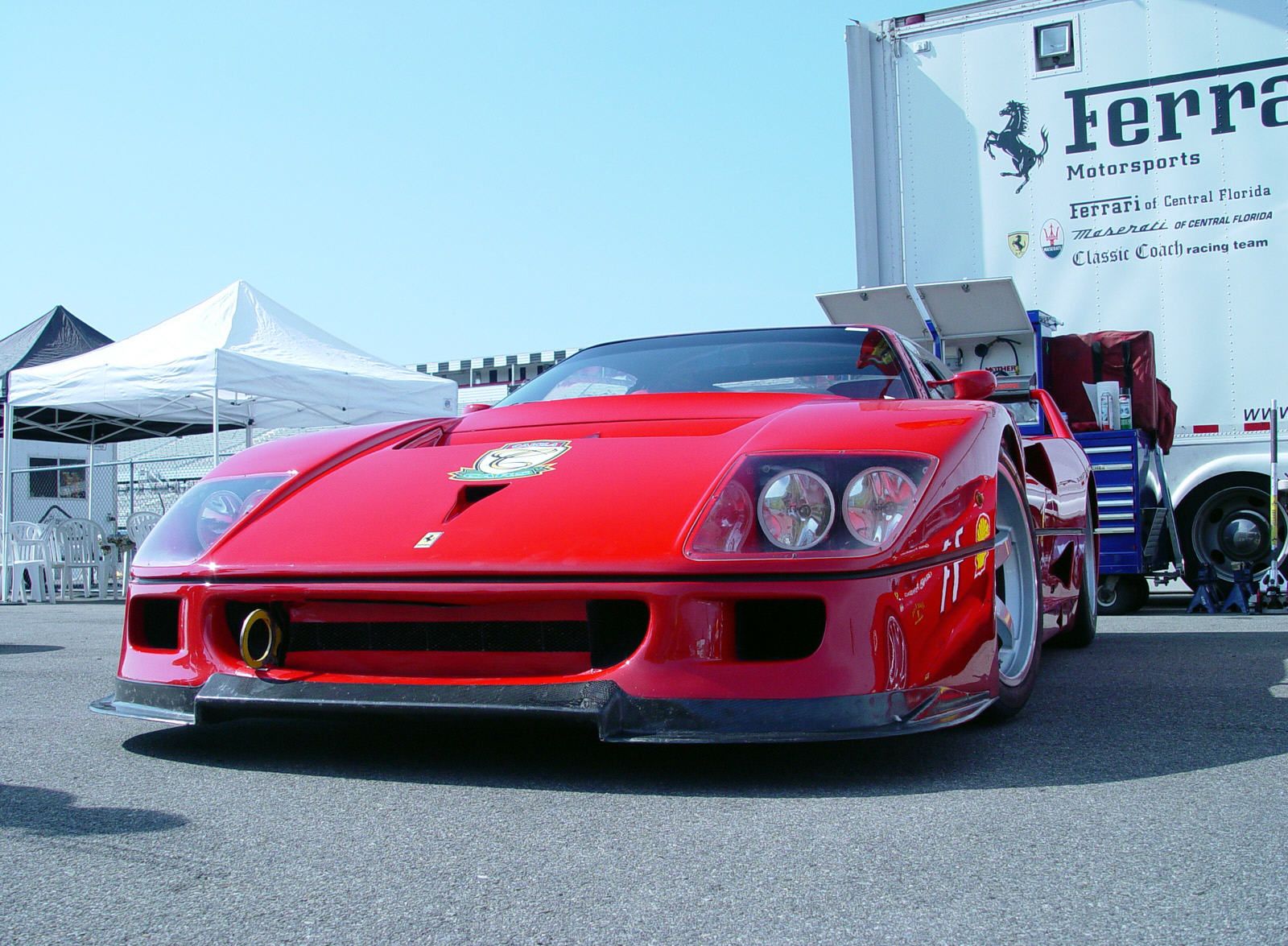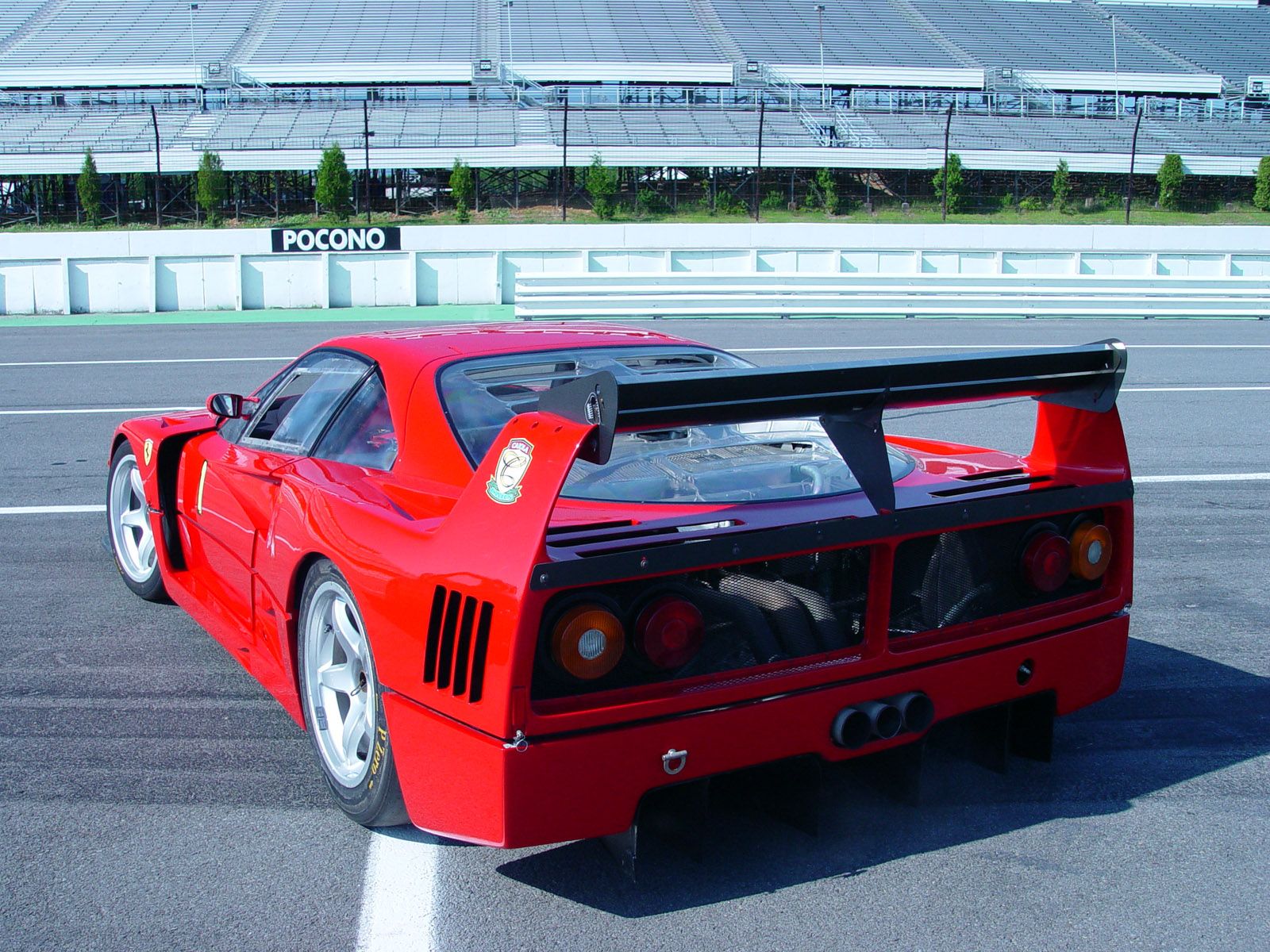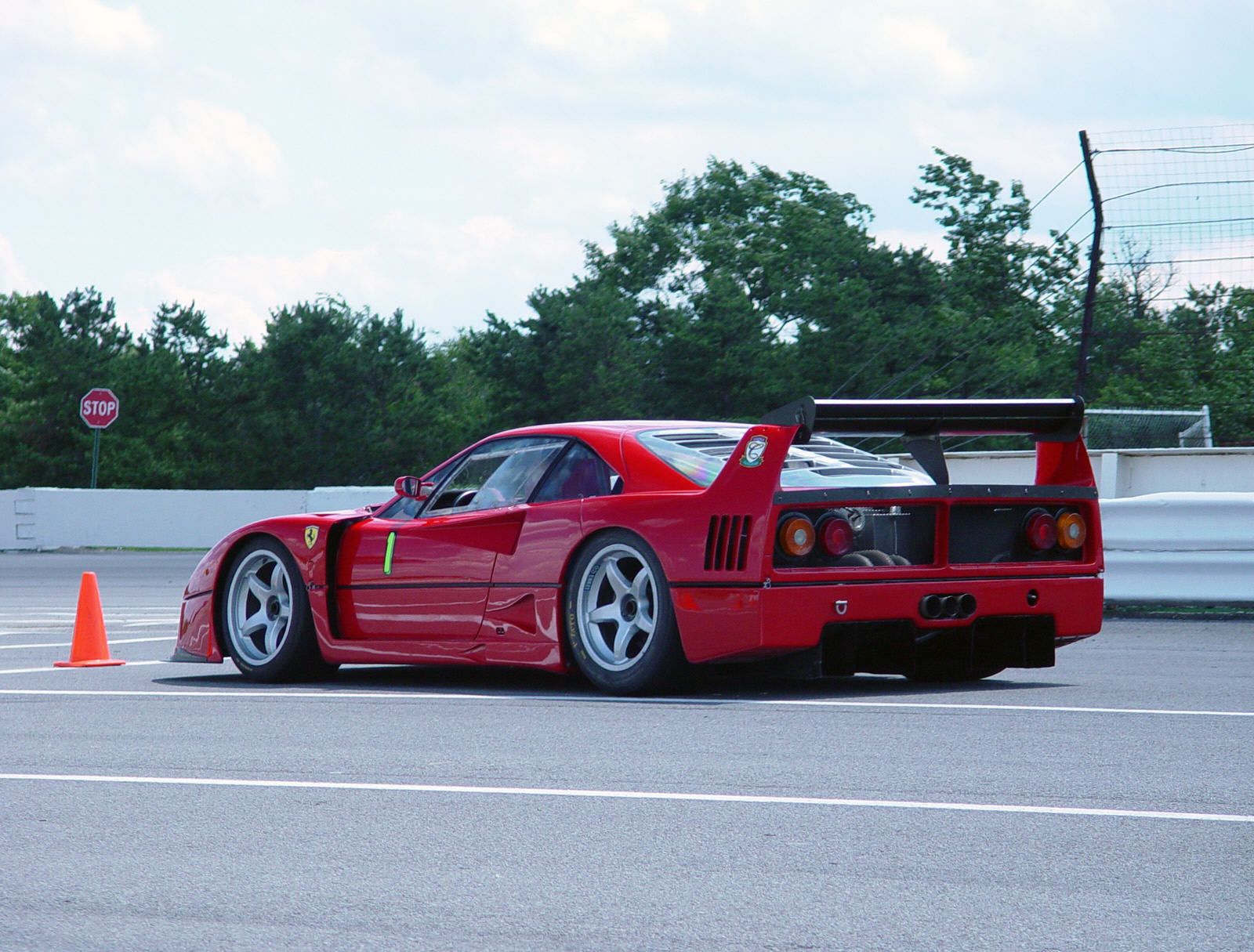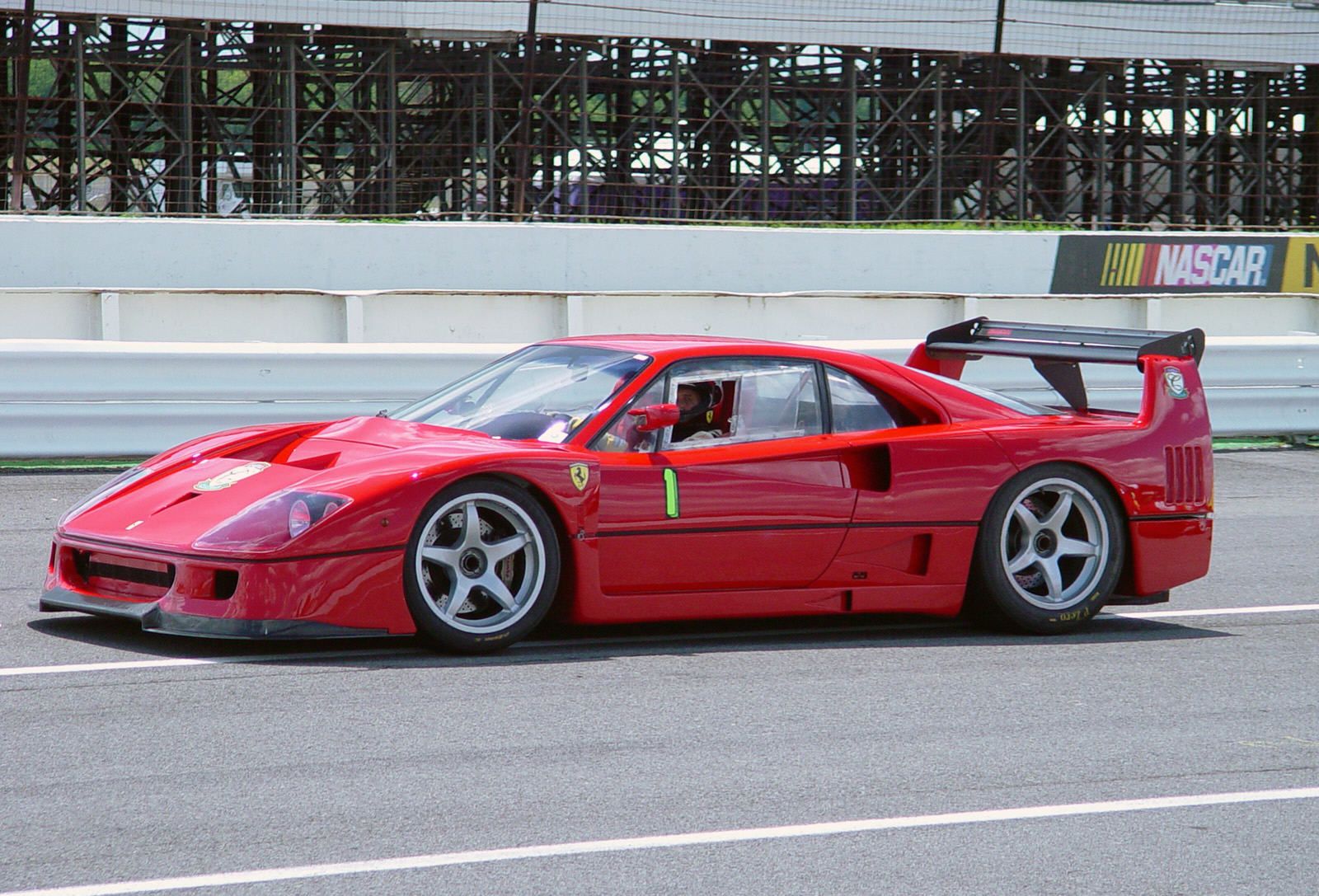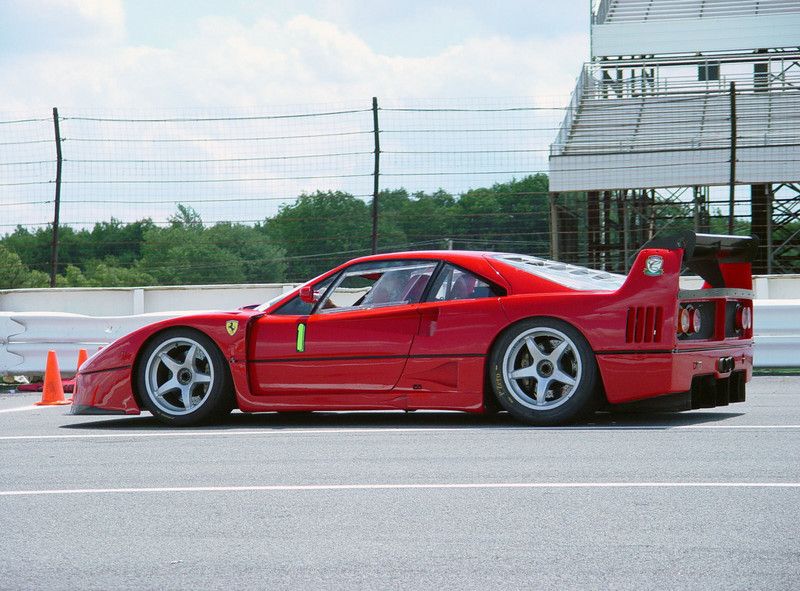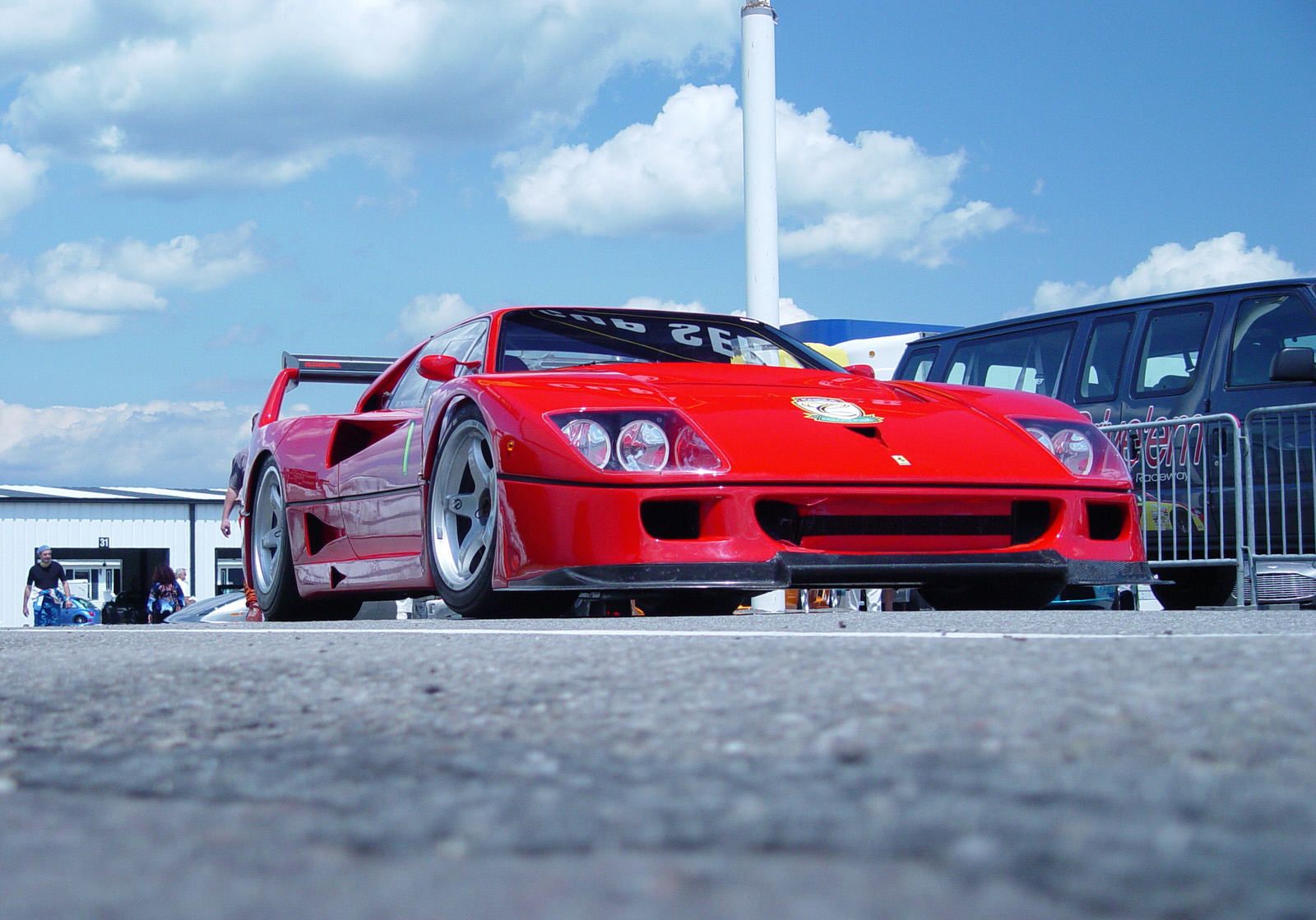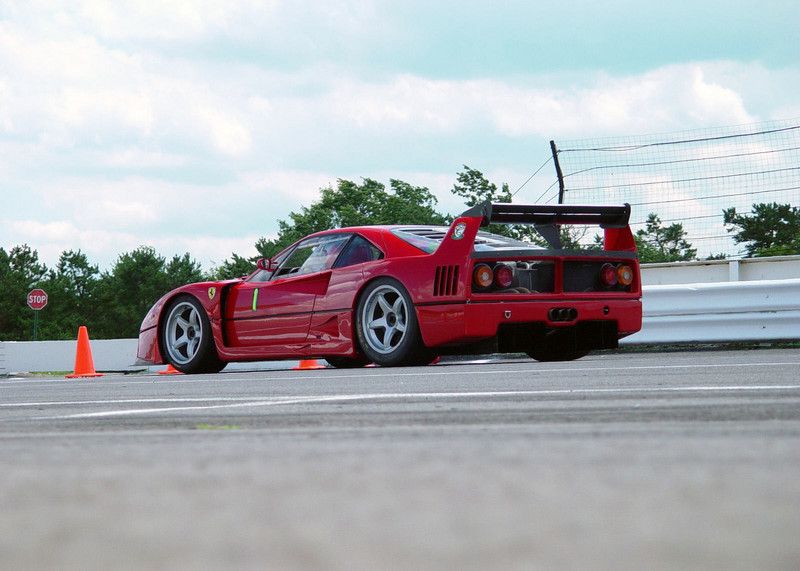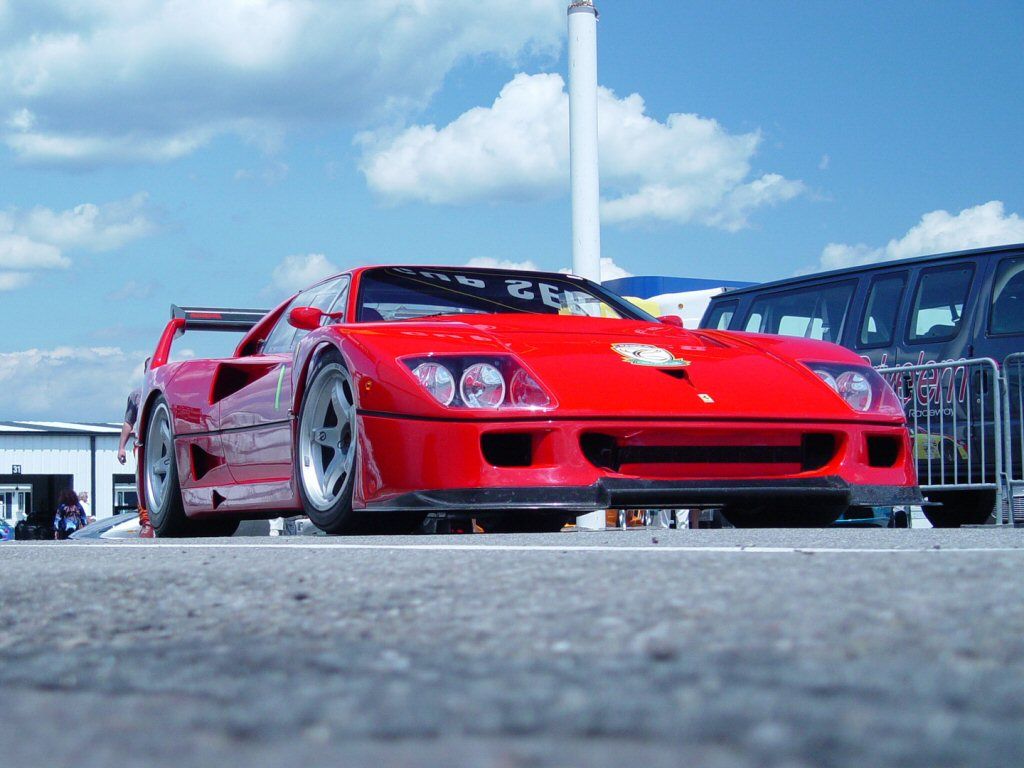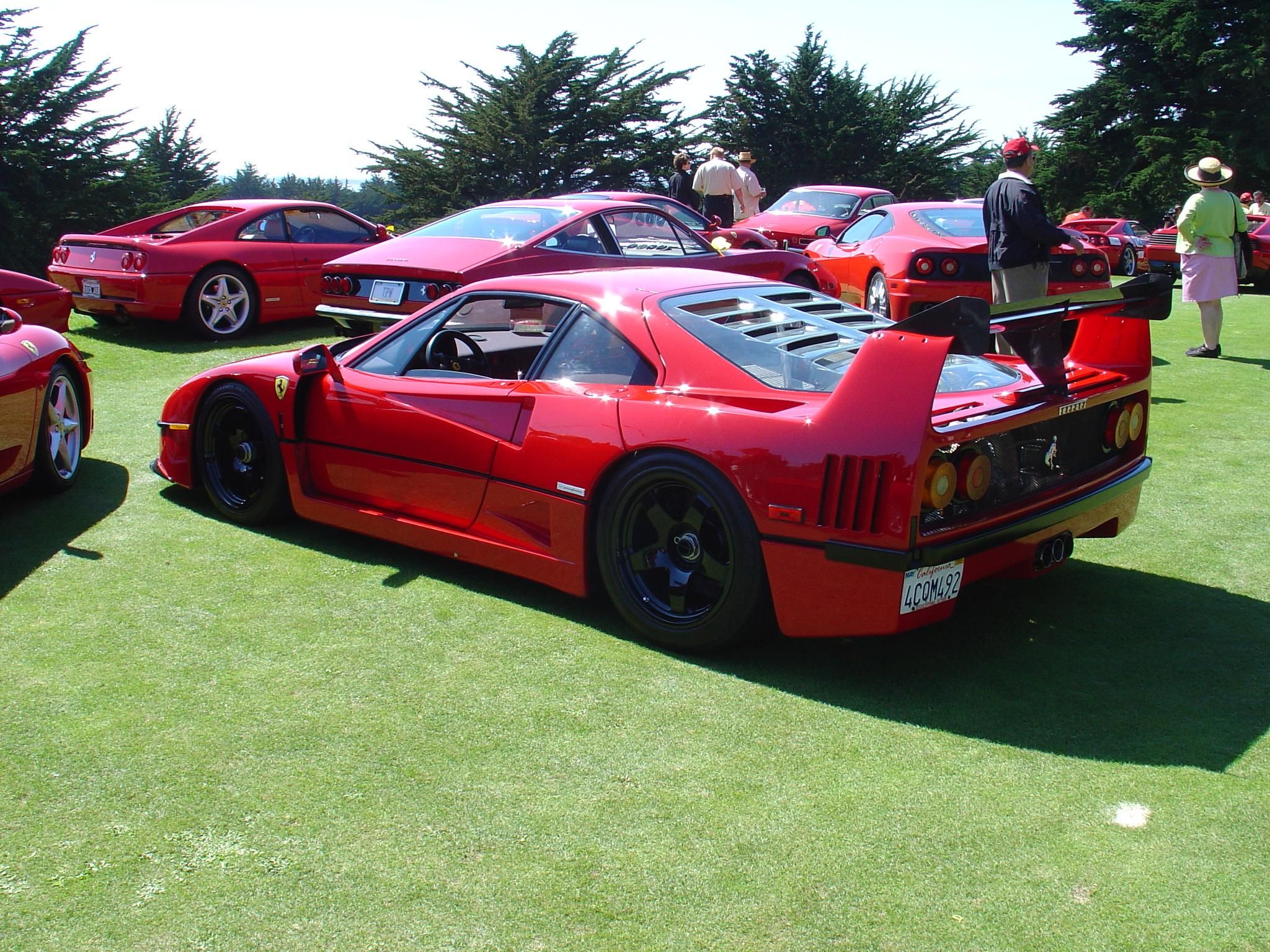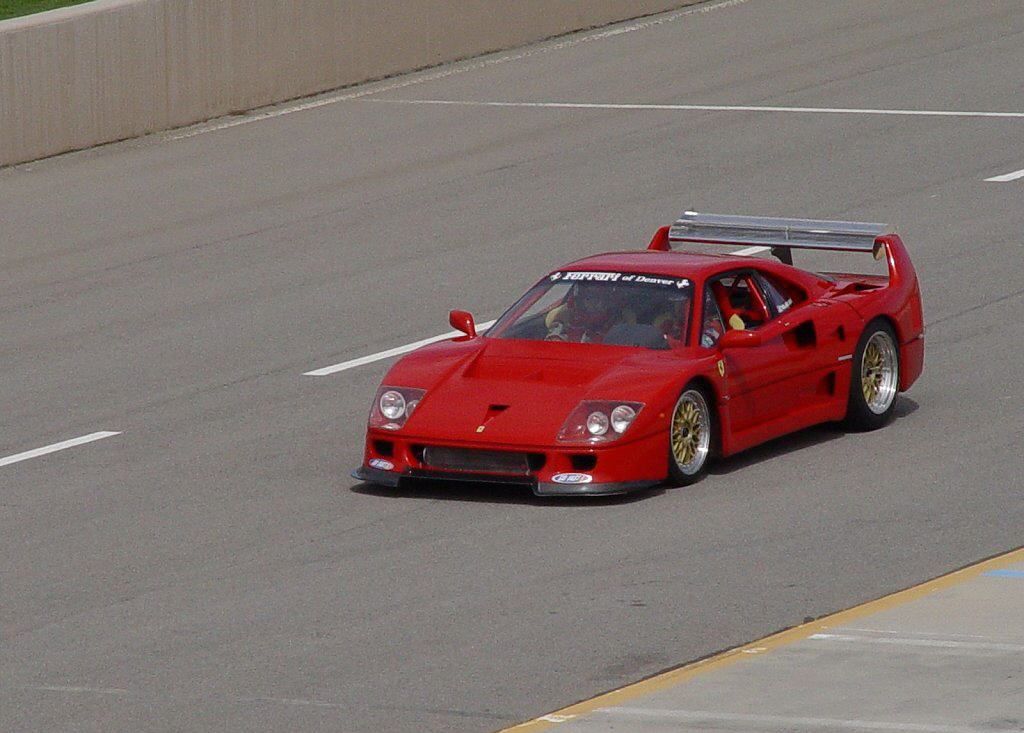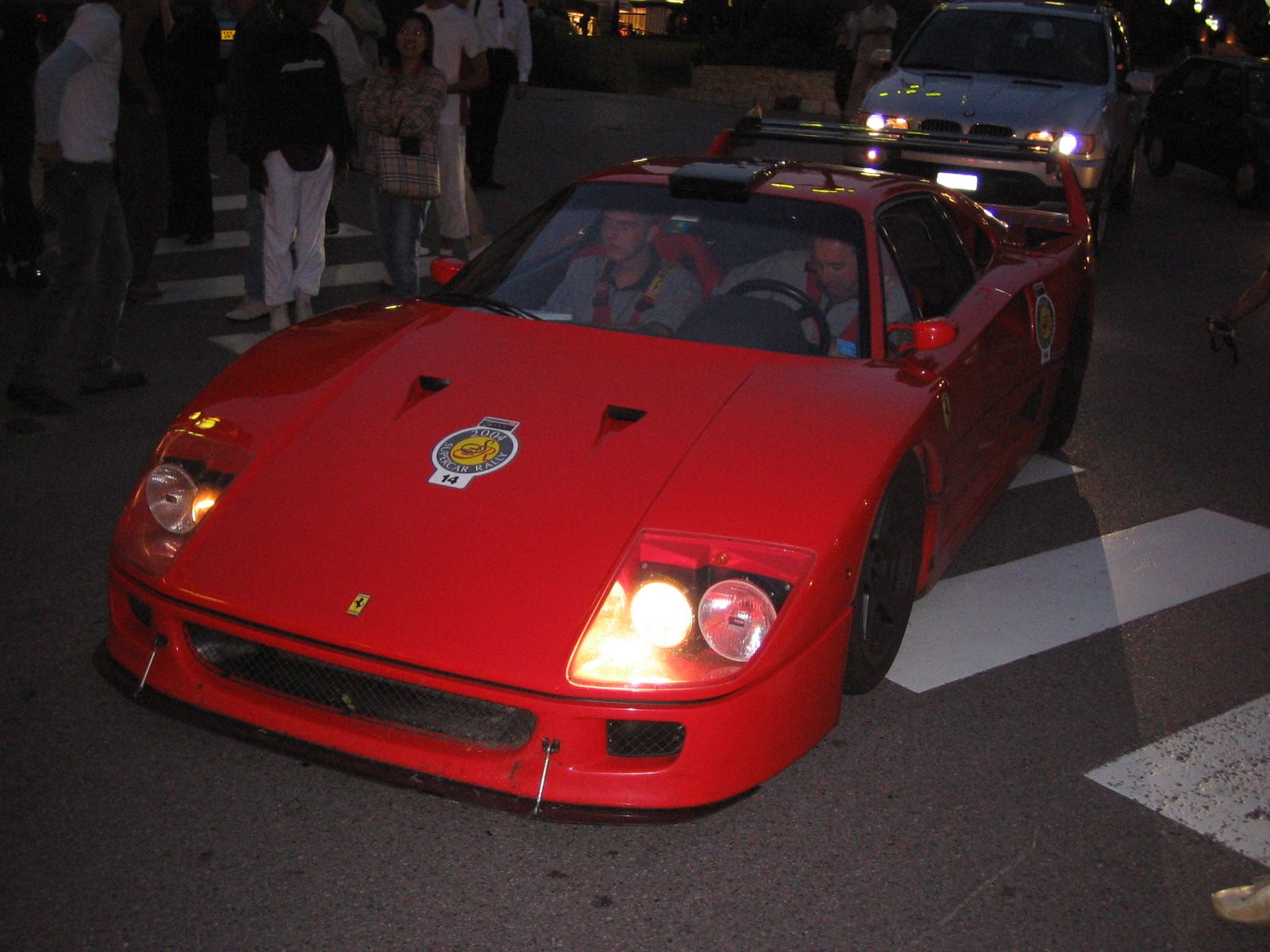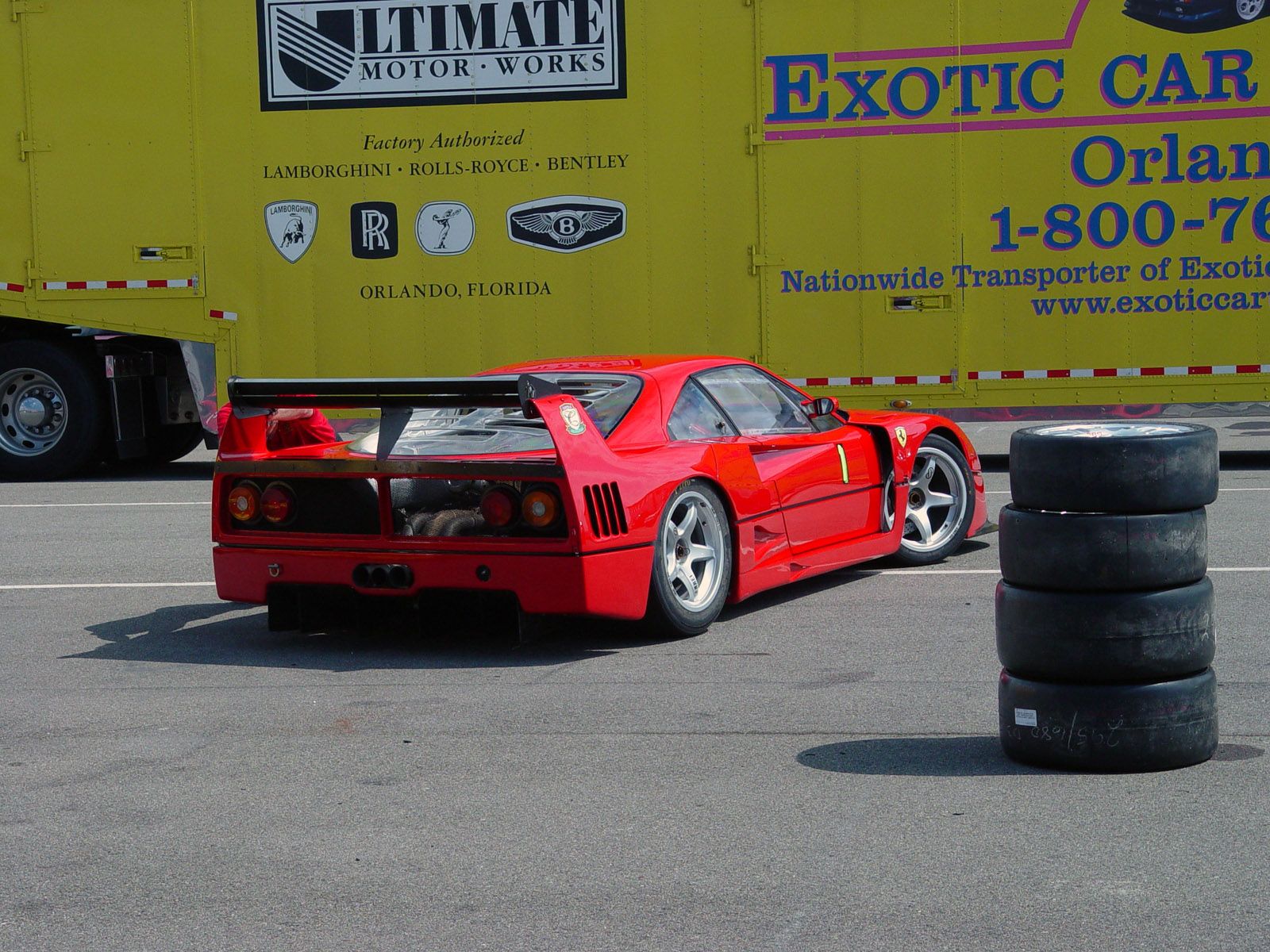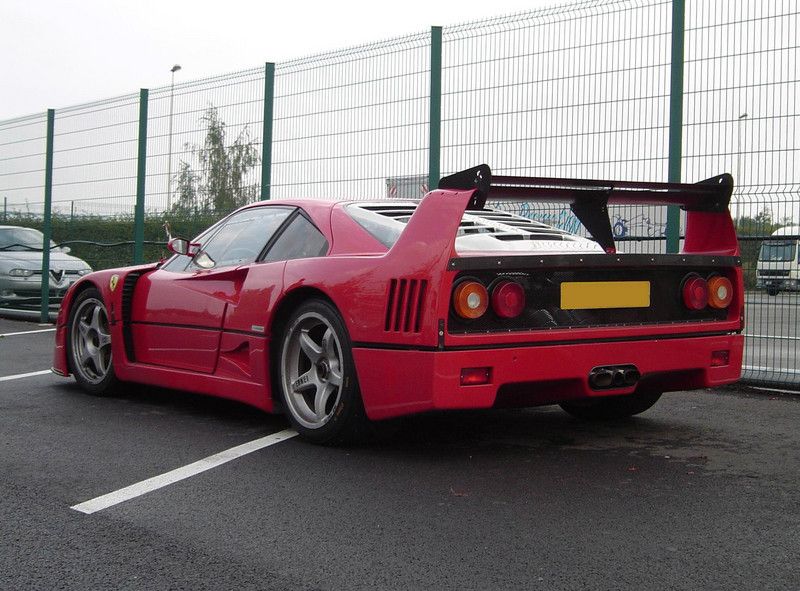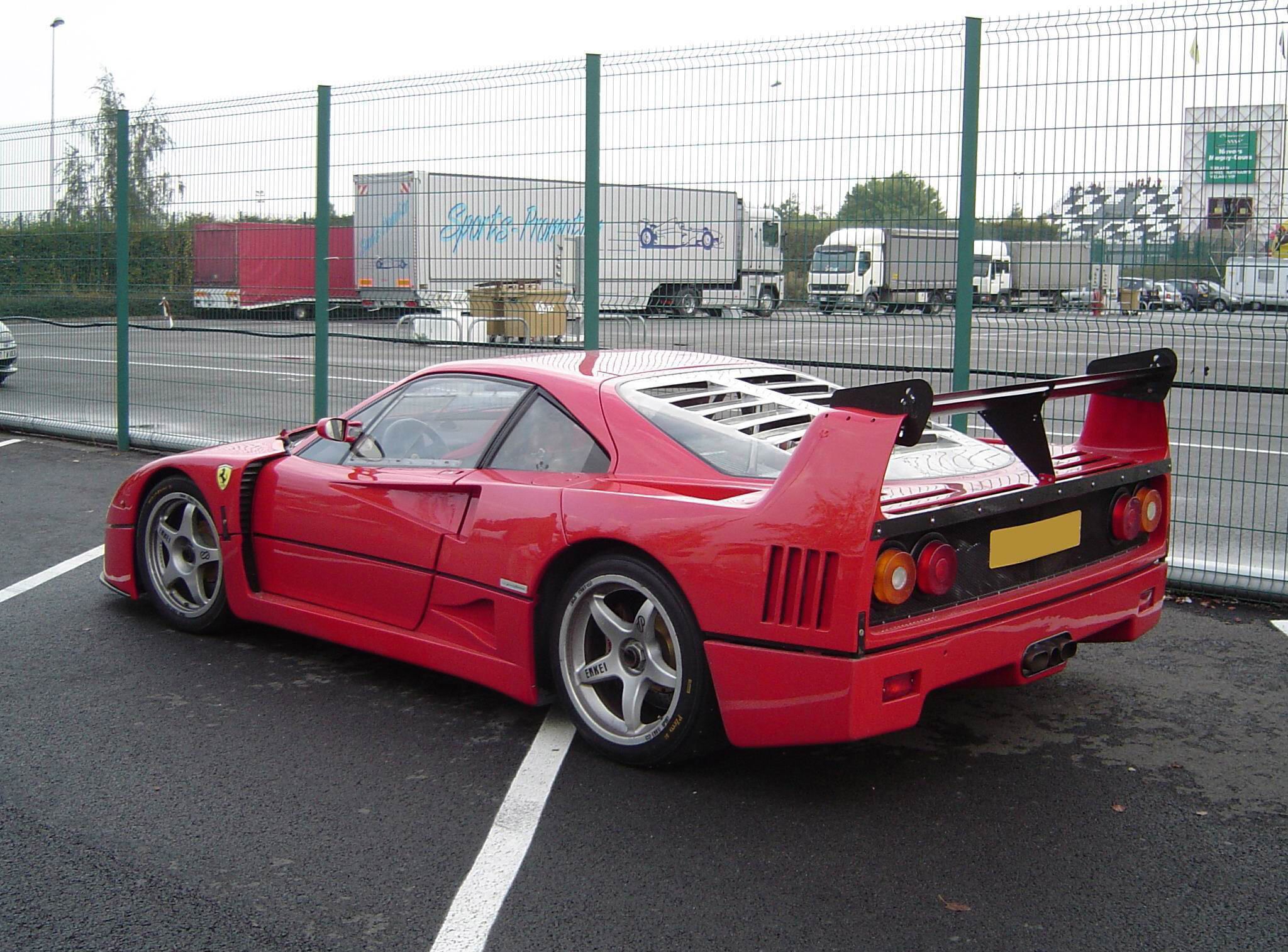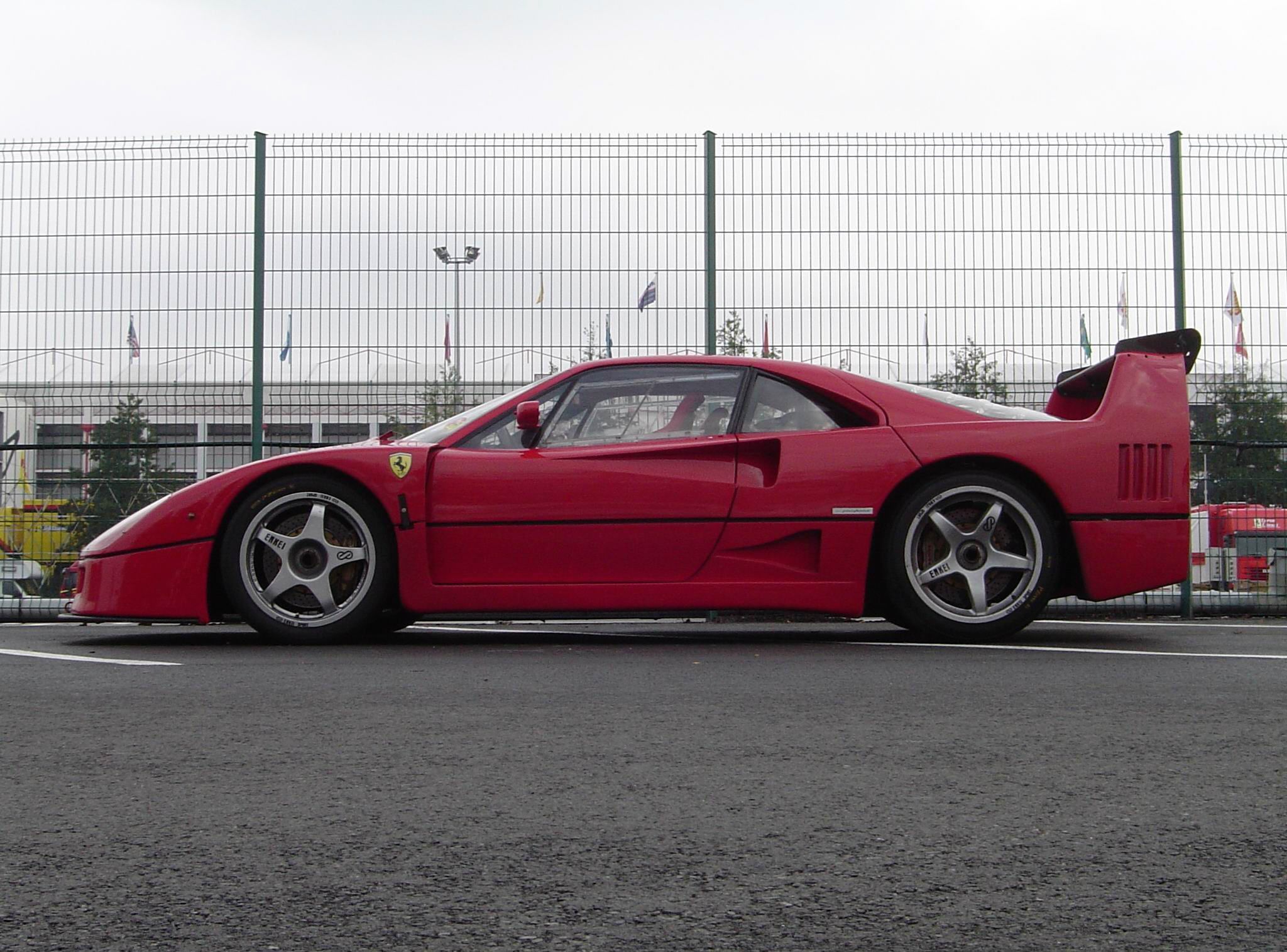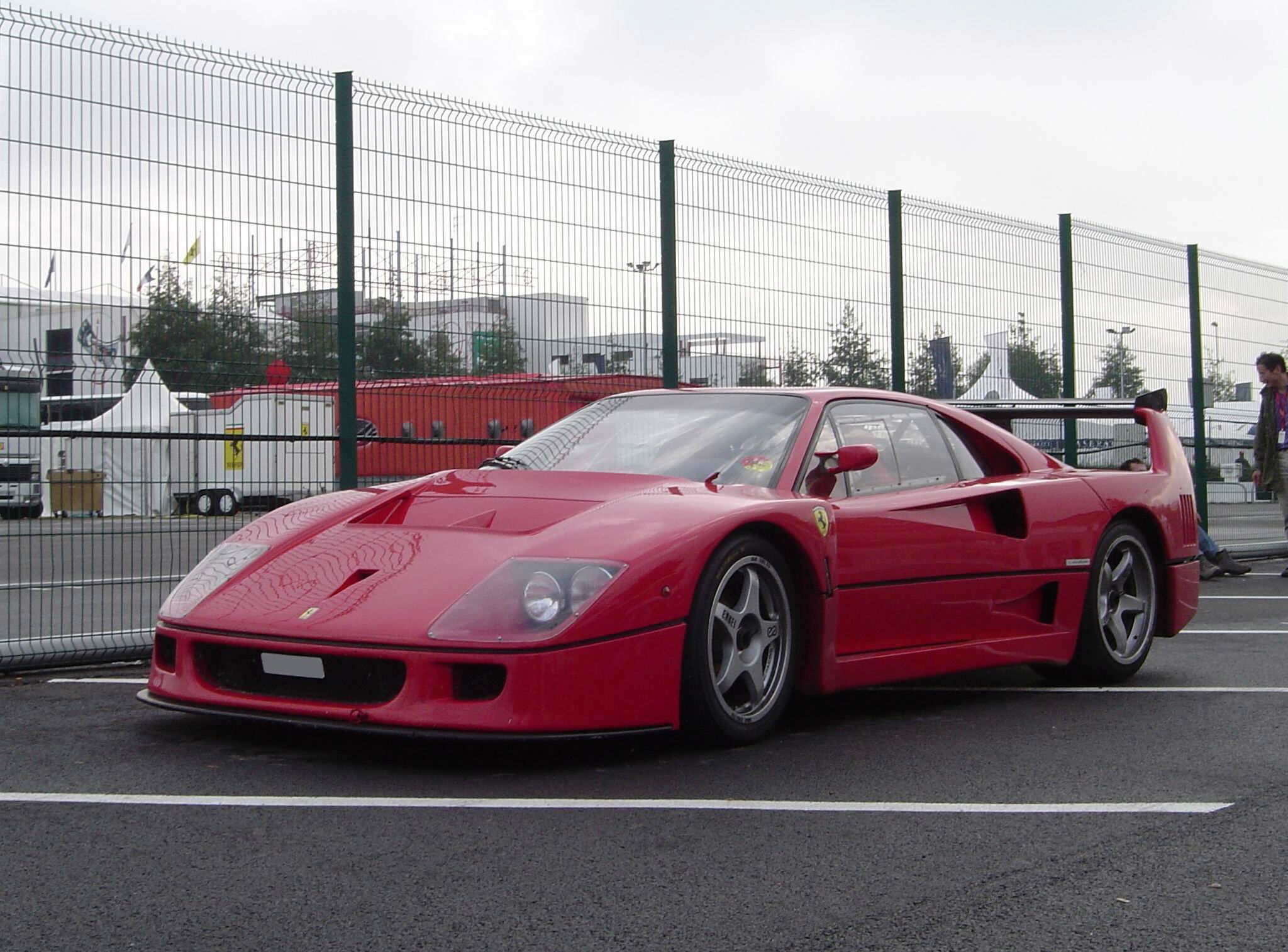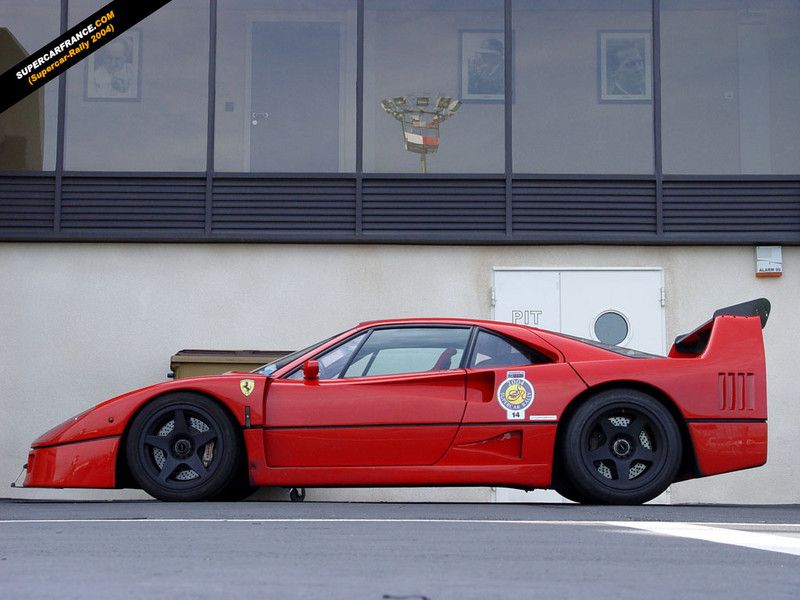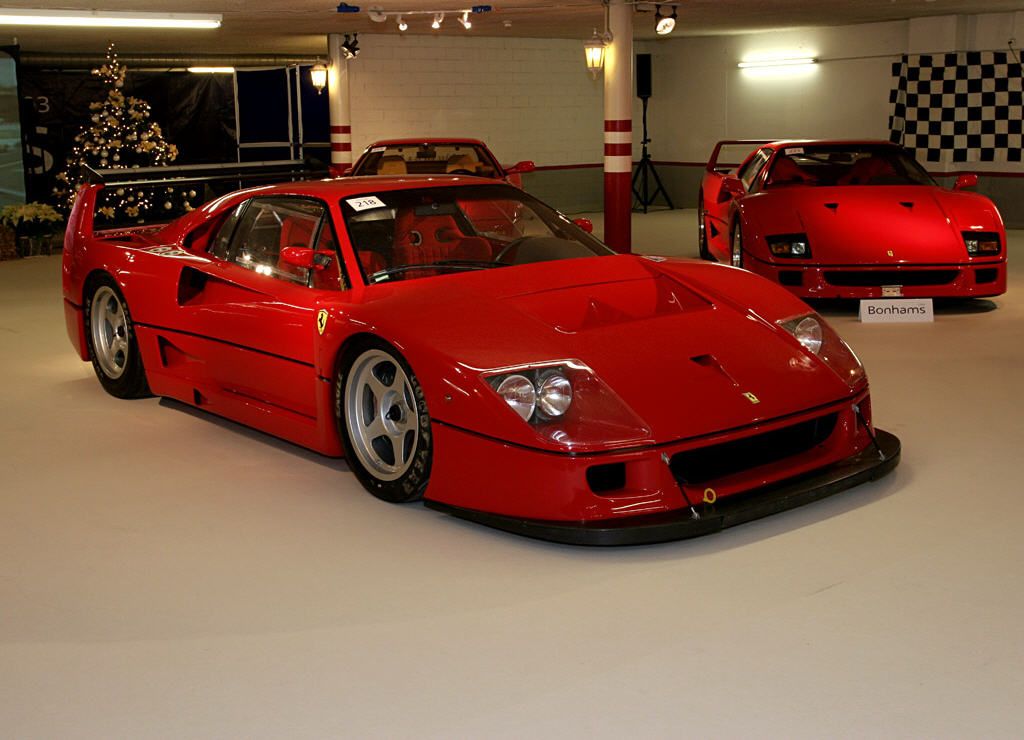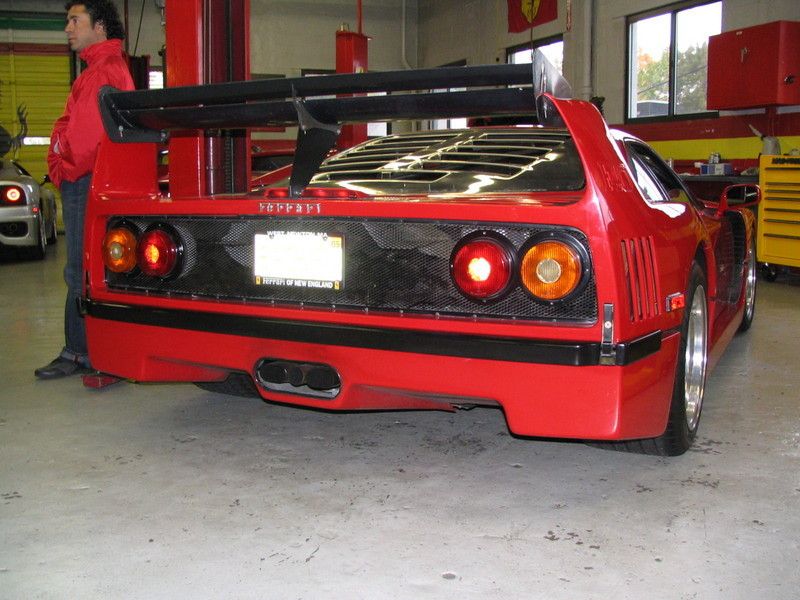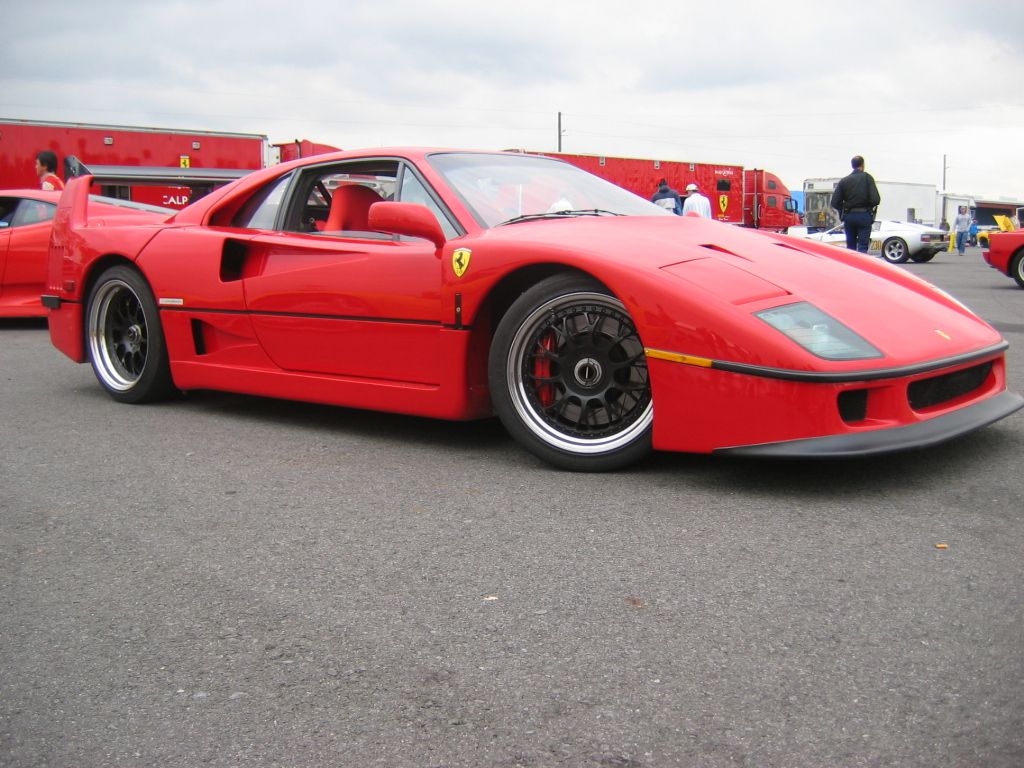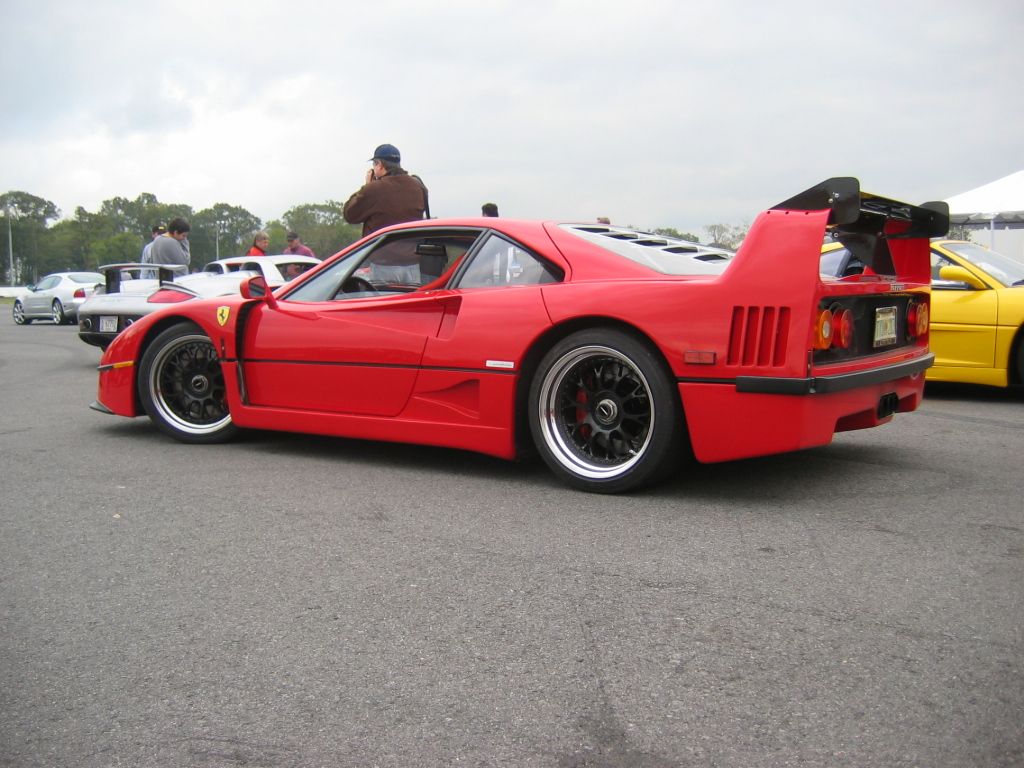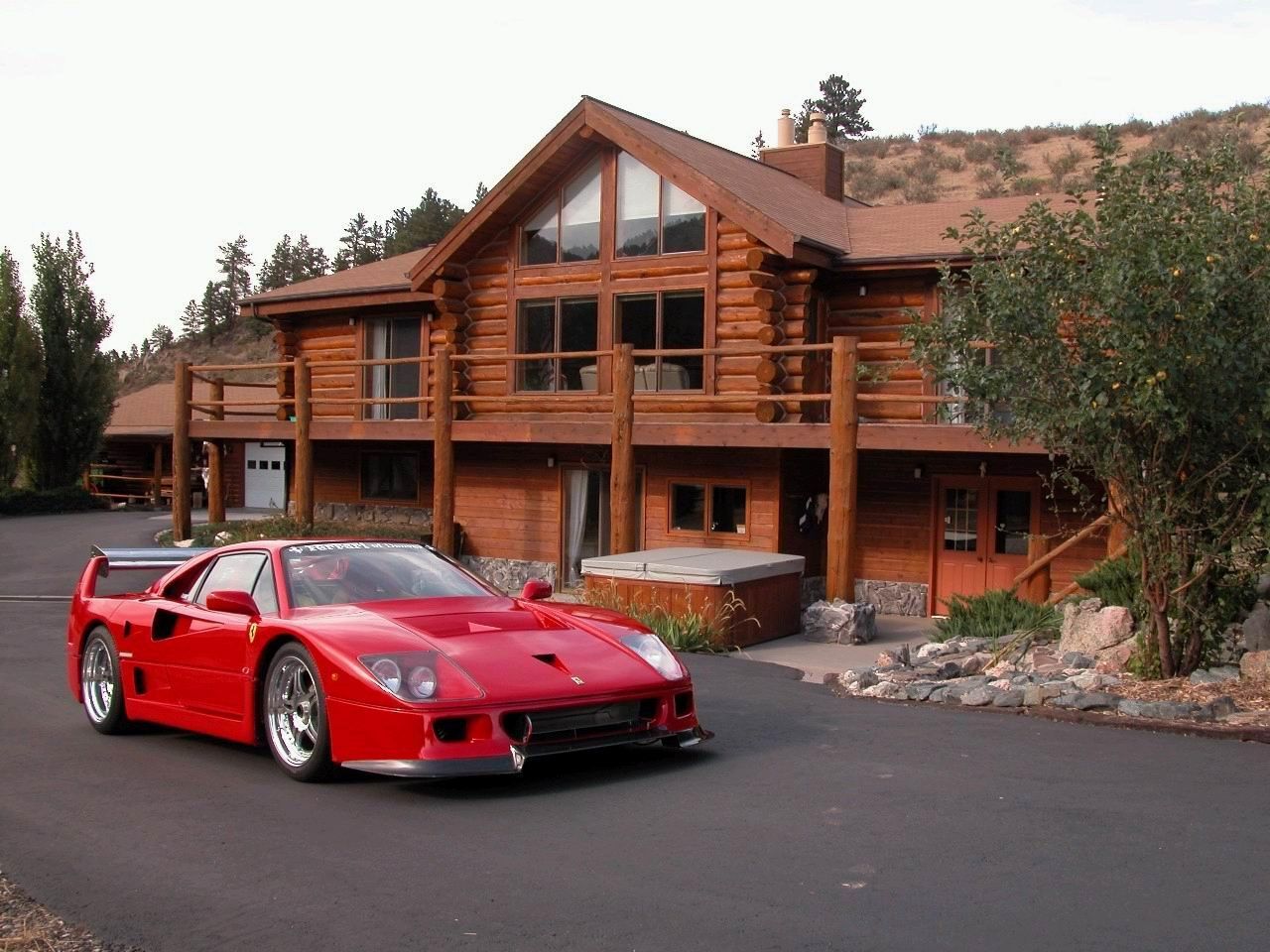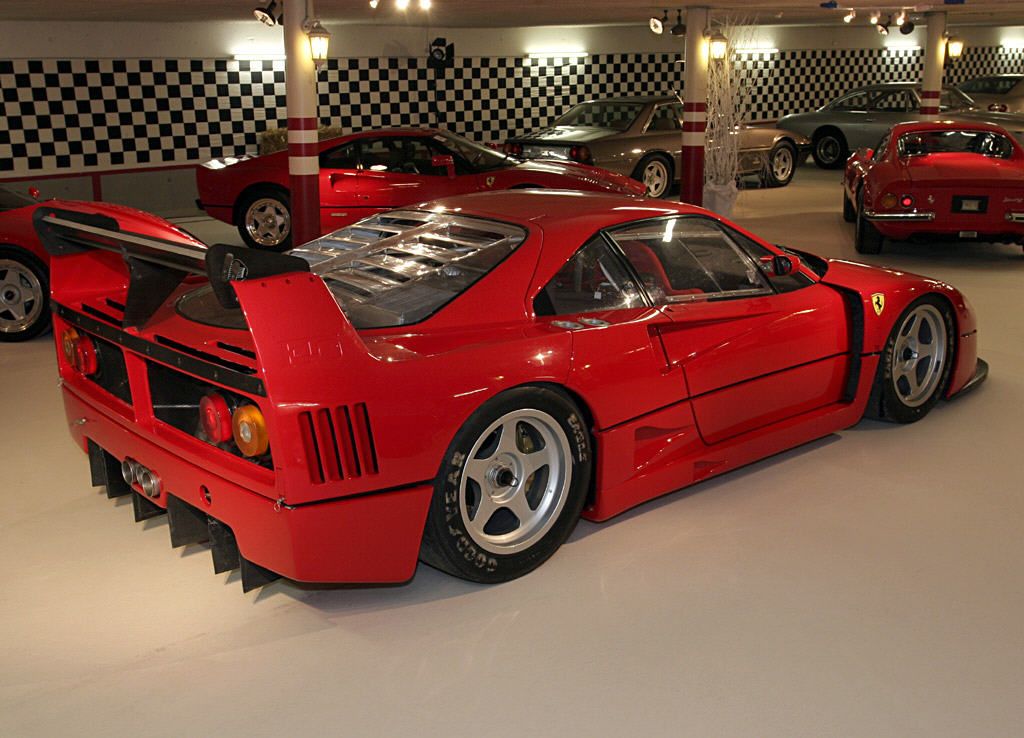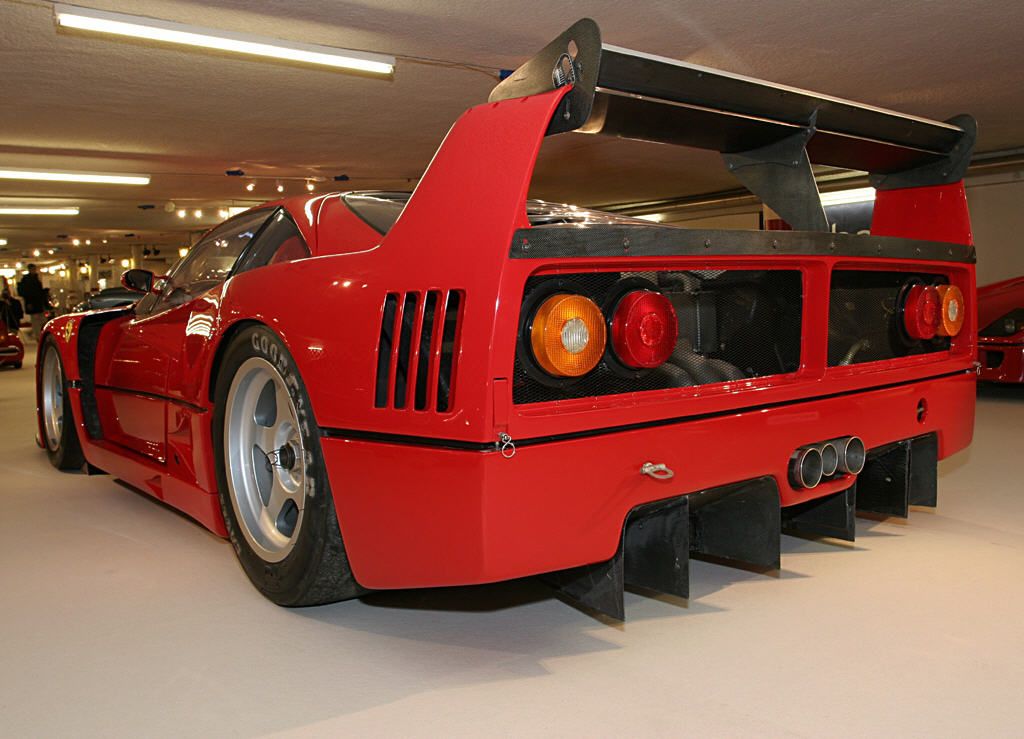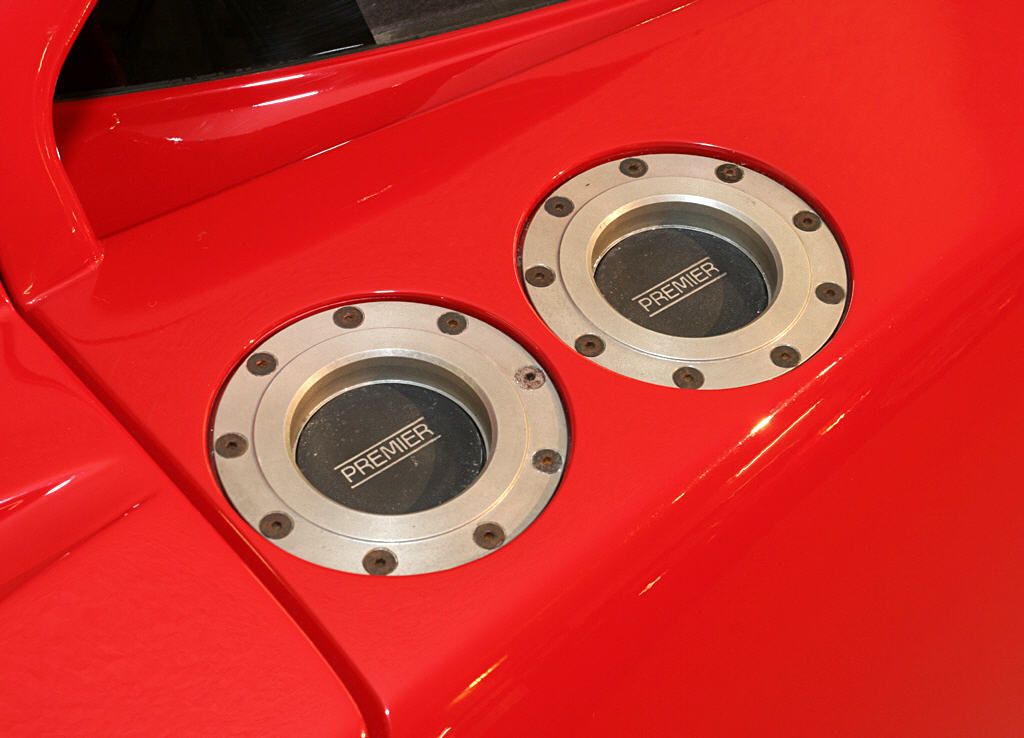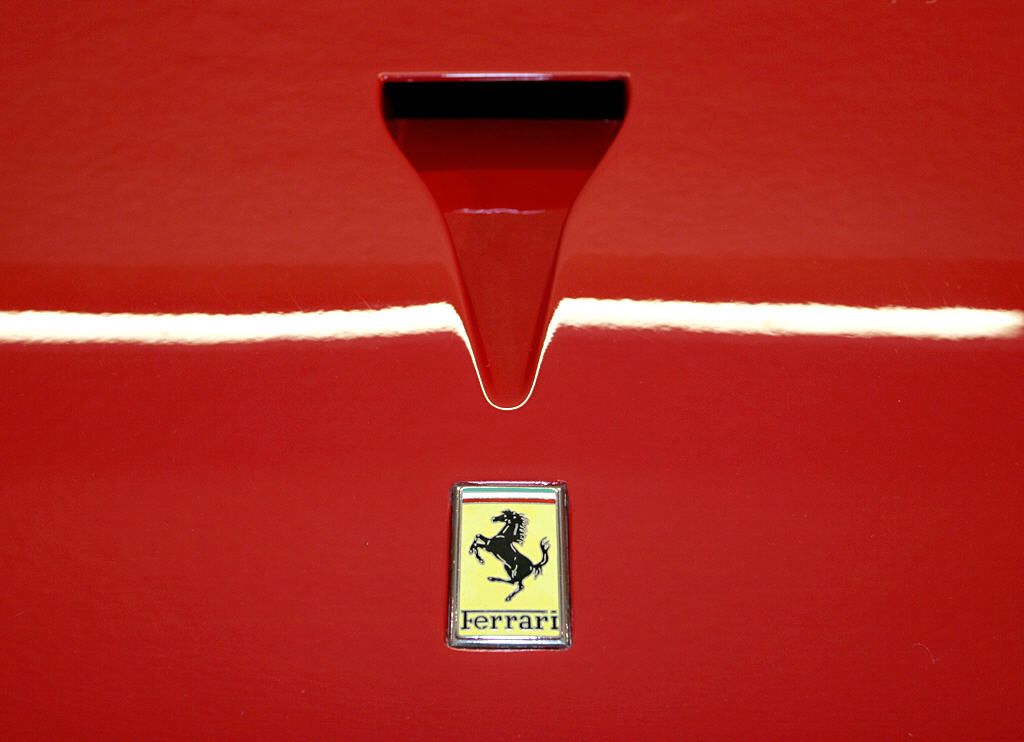The Ferrari F40. Utter those three little words, and every gearhead in a 10-mile radius will inexplicably come to attention. That’s because when it was released in the late ‘80s, the F40 was the fastest, most powerful, and most expensive road car to carry the Prancing Horse badge. Its raw, unbridled performance was the product of a relatively simple, go-kart-esque formula, and despite initial contempt from the motoring press, the F40 eventually consolidated its position as one of the all-time greats. So what happens when you take all that goodness and strip out the concessions required for road legality? The answer is the F40 LM, a race-spec variant packing more wing, less weight, and plenty of extra ponies.
Built for only a select few Ferrari customers, the F40 LM is a rare sight indeed, but you can still find the odd example at high-end auctions every so often. However, if you’re interested in buying one, dig deep, as the most recent example traded hands for more than $3 million.
That’s a lot of money, but there’s justification for it. Read on to learn what you get when Ferrari’s fastest goes racing.
Continue reading to learn more about the 1989 Ferrari F40 LM.
1989 - 1994 Ferrari F40 LM
- Make: Array
- Model: 1989 - 1994 Ferrari F40 LM
- Horsepower: 720@7500
- Transmission: 5-Speed Manual
History And Background
Initially, Ferrari didn’t intend to take the F40 racing, preferring to keep it as an ultra-high-performance street car, rather than something for competition. However, once customers got a taste of what the F40 was capable of, the Prancing Horse was inundated with demands for a racing spec. Leading the charge was Daniel Marin, a manager at Ferrari importer Charles Pozzi SA, and eventually, Marin managed to convince Ferrari to build a limited production racing F40.
Responsible for putting it together was Michelotto Automobili, an Italian company based out of the Italian town of Padua that specializes in building racers for well-to-do clientele. Ferrari first employed Michelotto in the ‘70s, and its creations include the 512 BB LM and 308 GTB rally cars.
As you may have already guessed, the LM in F40 LM stands for Le Mans, a nod to the kind of sports car racing the car was destined to compete in. The car was built as an offshoot of Ferrari’s GTO Evoluzione project, and fell under IMSA specification, a race series in North America. However, the car was designed to compete in a variety of different racing series around the world.
The first F40 LM chassis (number 79890) was completed in October of 1988. Ferrari test driver Dario Benuzzi was tasked with its development, as were several other high-profile drivers at the time. Over the course of 30,000 km (18,641 miles), the F40 LM was refined and tuned, including a top speed run at the Nardo Speed Bowl in February of 1989 that saw the speedo hit a max velocity of 229 mph.
The F40 LM made its competitive debut at Laguna Seca at the North American IMSA GT series in October of 1989. At the helm was Jean Alesi. Afterwards, a pair of F40 LM’s would go first and second at Ferrari France.
Finally, the first customer car was delivered in May of 1990.
Exterior
While similar to its road-going brethren, the F40 LM employs extensive revisions to the original’s aerodynamics.
To start, the front intake is deeper, while the carbon fiber front splitter is extended. The hood is modified with a new NACA duct (a type of low-drag air inlet originally used on aircraft), which is placed above the front-facing Ferrari badge, plus there are large cutouts in the hood to improve heat dissipation. Weight is kept off the nose thanks to fixed headlight housings covered in Lexan, which replace the standard F40’s pop-up units.
More plastic replaces the side windows, while additional NACA vents are placed just ahead of the rear wheels. The side-view mirrors are adjusted for better aero, and the lightweight alloy wheels come from OZ racing in a unique design measured at 17 inches in diameter.
In back, we once again find a trio of exhaust pipes, but the rear wing is significantly more aggressive, featuring a center section that can be adjusted from inside the cockpit.
Interior
Inside, it’s 100 percent business. While the standard F40 was definitely barebones, the F40 LM takes that attitude to an extreme – the correct thing to do on a race car. Incredibly, the F40 LM actually cuts weight compared to the already-spartan F40 cabin.
Part of this is down to the host of racing gear installed as replacement for the street stuff. This includes new seats from OMP, as well as all-digital instrumentation behind the three-spoke steering wheel. The pedals are drilled aluminum, and the doors are little more than carbon sheets.
Drivetrain
In road-going trim, the F40 uses a longitudinal, rear-mid-mounted, 90-degree 2.9-liter twin-turbo V-8, with double overhead cams per cylinder bank, and four valves per cylinder. Output is rated at 478 horsepower at 7,000 rpm and 424 pound-feet of torque at 4,000 rpm. Properly applied at the rear wheels, this powerplant produces a frenetic, insane level of performance – but it’s nothing compared to the LM.
To prepare the racing F40 for on-track domination, the Tipo F120 A V-8 engine was drastically altered, so much so it received a new designation – Tipo F120 B.
Displacement remains static at 2,936 cc’s, but the twin IHI turbos were updated to produce as much as 2.6 bar (37.7 psi) of boost, rather than the standard F40’s 1.1 bar (16 psi).
Complementing this are larger intercoolers from Behr, as well as new cams. The compression ratio was uprated from 7.8:1 to 8.0:1, while the engine management was swapped in favor of Weber Marelli IAW 072 with dual fuel injectors per cylinder.
All that amounts to 720 horsepower at 7,500 rpm, but without the restrictors, output would go up to 760 horsepower. Some reports indicate figures as high as 900 horsepower.
To handle all that, the LM got an upgraded high-performance five-speed manual gearbox, which ditched the synchromesh and employed a triple-plate hydraulic clutch.
As for acceleration, the 0-to-60 mph sprint takes just 3 seconds, while top speed is rated at 229 mph.
Chassis And Handling
Under the aero is a composite chassis with tubular steel, which used additional carbon fiber reinforcements compared to the road-going F40.
The brakes are beefier 355 mm (14-inch) ventilated discs from Brembo, while the steering is a rack-and-pinion set-up.
Making it handle is a firmer suspension package, including Koni springs and dampers and stiffer anti-roll bars, as well as wider wheels and more rubber.
And thanks to the diet, the curb weight is also quite a bit lighter, down to 2,315 pounds from the standard F40’s 3,018 pounds – a savings of over 700 pounds.
Prices
Ferrari only made 19 units of the F40 LM, making it much more exclusive than the standard F40’s production run of 1,315 units. Many of the 19 LM’s were put into private collections right out of the box and were never raced.
So how much should you expect to pay if you see one hit the block?
In 2013, at the Gooding And Company auction in Monterey, one example exchanged hands for $2.09 million. Two years later, at the RM Sotheby’s auction in Monterey, another F40 LM went for $3.3 million.
Competition
Rally-prepped Porsche 959
When it comes to finding a worthy opponent for the venerable F40, the go-to answer is the Porsche 959. However, finding something to go against the F40 LM is slightly trickier, but an answer can be found in the rally-prepped 959’s slated for use in rally racing competition. Motivated by a rear-mounted, twin-turbo flat-six engine, the 959 put power down to all four corners, making it a high-tech marvel for its time.
Read the full review here.
Lamborghini Countach QVX
While not nearly as successful as the F40 LM or race-spec 959, the Countach QVX could be considered a rival. Built by David Jolliffe in 1985 to compete in Group C sports car racing, the QVX was powered by a 700-horsepower mid-mounted V-12, but due to financial constraints, the car saw only limited success.
Read the full review here.
Read the full review here.0}
The F40 LM takes a car already laden with superlatives and turns everything up to 11. Every aspect of it is sharper, more hardcore, and faster. It’s a beast that only a superhero can tame, built at a time when racing was still considered somewhat of a blood sport. It’s got a no-quarter-given attitude and stratospheric specs, and embodies what’s possible when the world’s fastest takes to the track.

